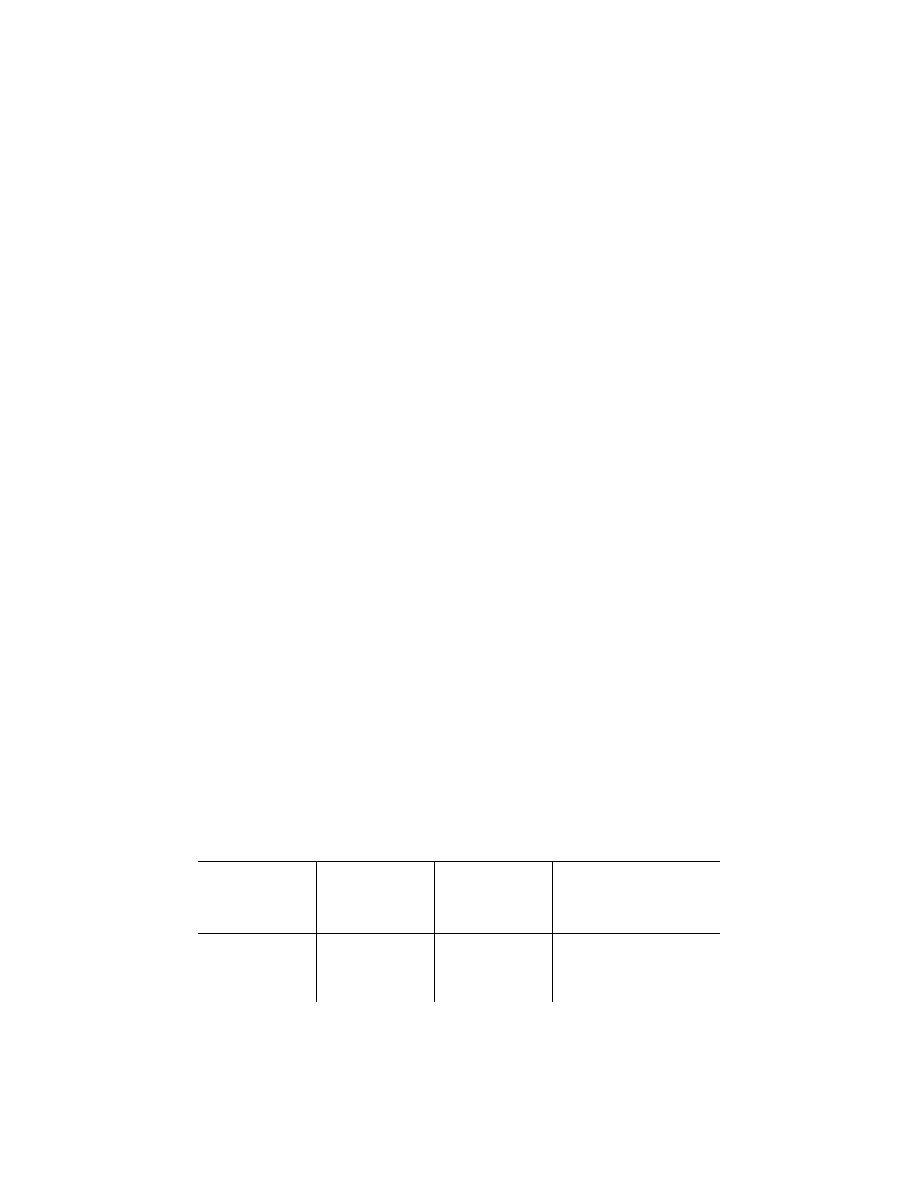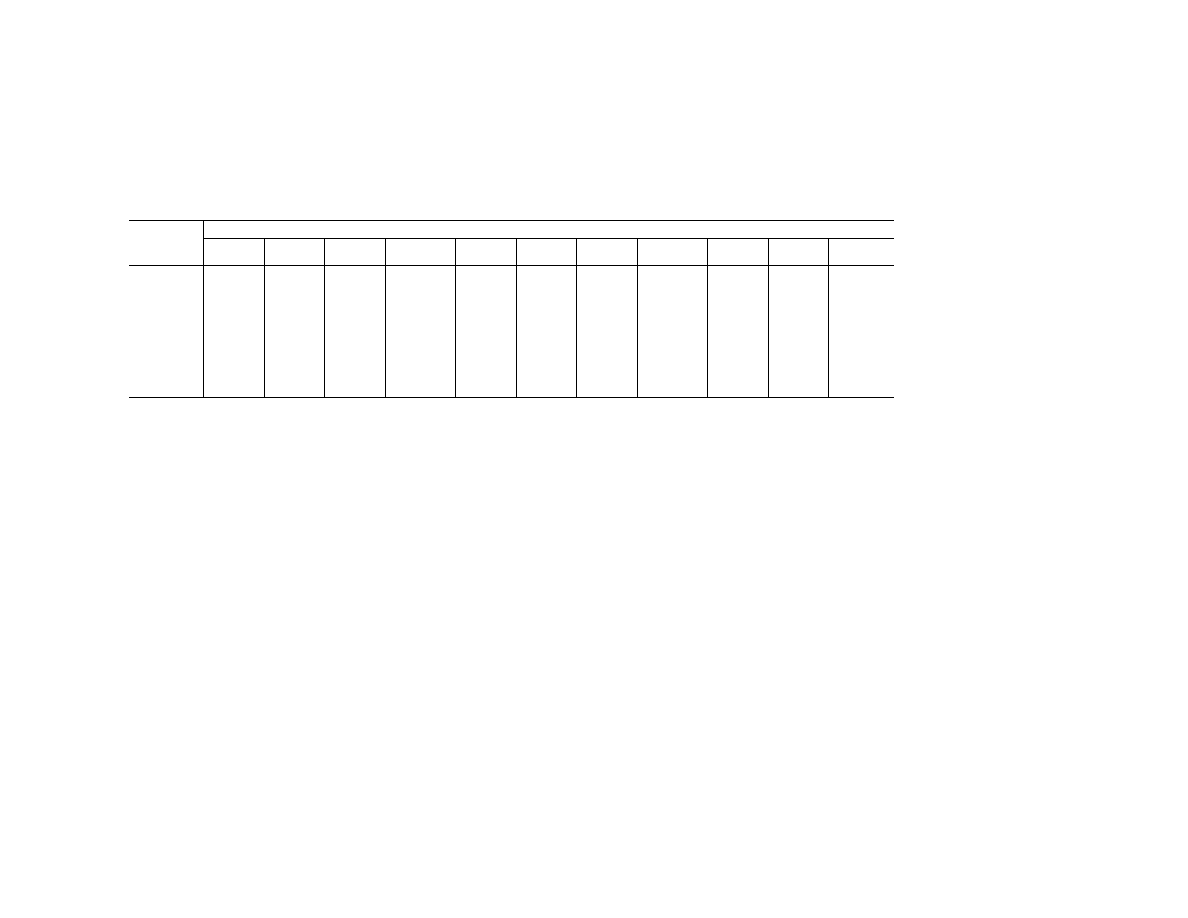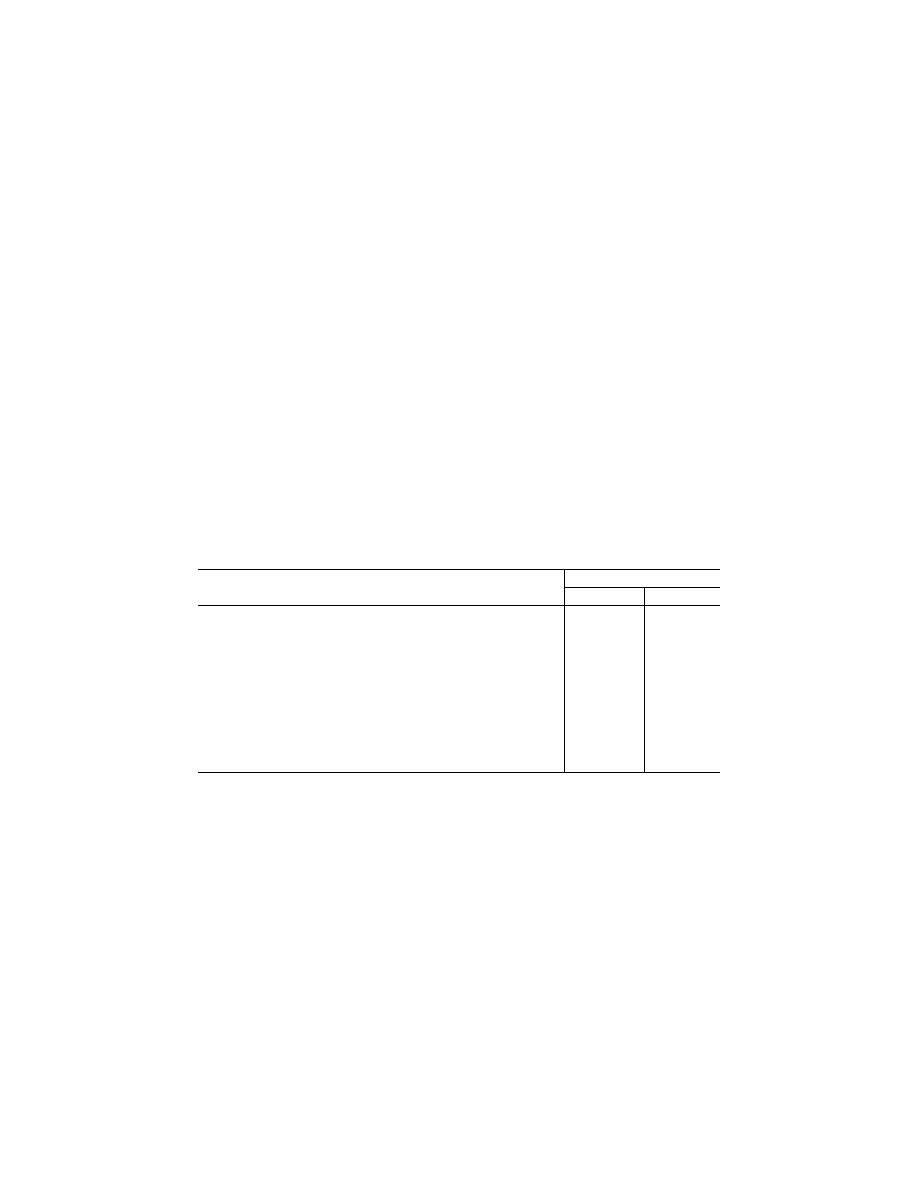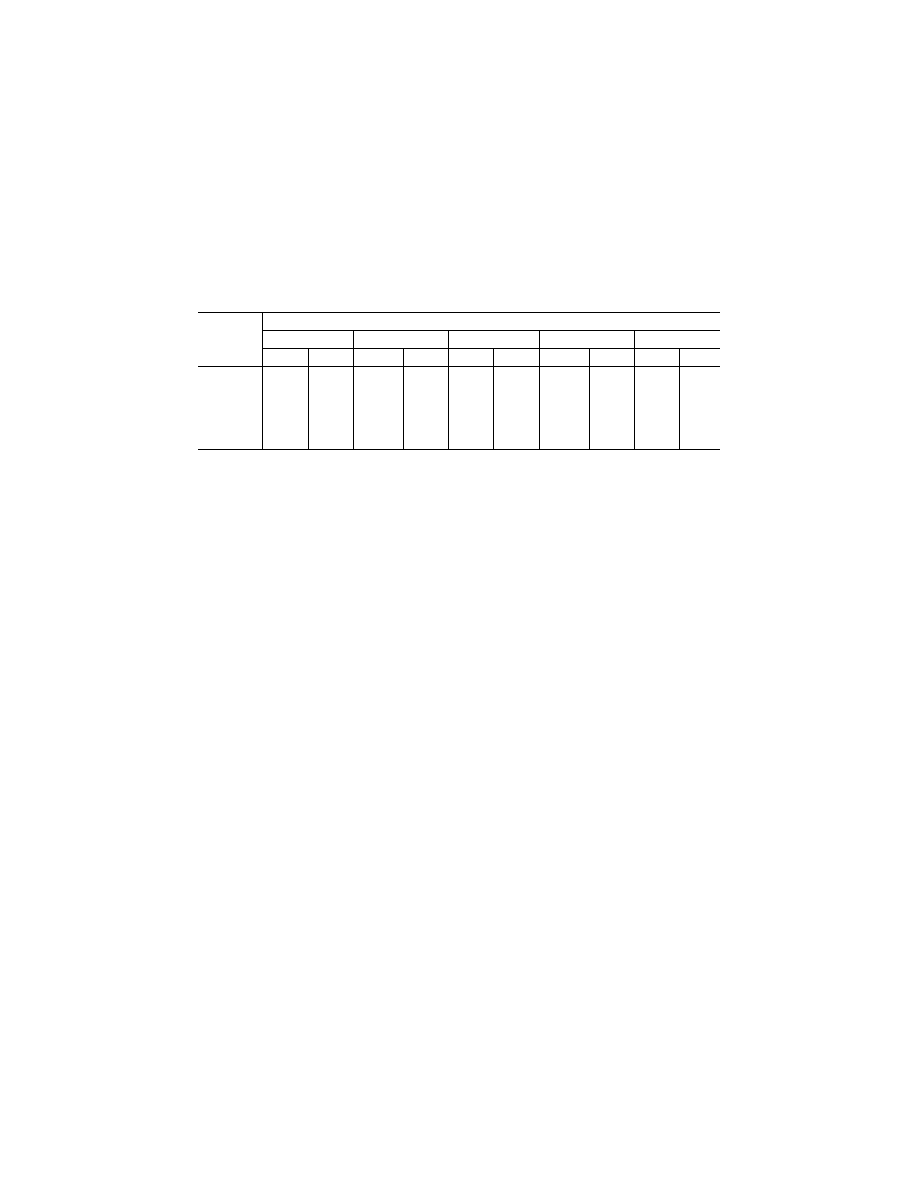
850
49 CFR Ch. I (10–1–23 Edition)
Pt. 175
PART 175—CARRIAGE BY
AIRCRAFT
Subpart A—General Information and
Regulations
Sec.
175.1
Purpose, scope, and applicability.
175.3
Unacceptable hazardous materials
shipments.
175.8
Exceptions for operator equipment and
items of replacement.
175.9
Special aircraft operations.
175.10
Exceptions for passengers, crew-
members, and air operators.
175.20
Compliance and training.
175.25
Passenger notification system.
175.26
Notification at cargo facilities of haz-
ardous materials requirements.
175.30
Inspecting shipments.
175.31
Reports of discrepancies.
175.33
Shipping paper and information to
the pilot-in-command.
175.34
Exceptions for cylinders of com-
pressed oxygen or other oxidizing gases
transported within the State of Alaska.
Subpart B—Loading, Unloading and
Handling
175.75
Quantity limitations and cargo loca-
tion.
175.78
Stowage compatibility of cargo.
175.88
Inspection, orientation and securing
of packages of hazardous materials.
175.90
Damaged shipments.
Subpart C—Specific Regulations Applica-
ble According to Classification of Ma-
terial
175.310
Transportation of flammable liquid
fuel; aircraft only means of transpor-
tation
175.501
Special requirements for oxidizers
and compressed oxygen.
175.630
Special requirements for Division 6.1
(poisonous) material and Division 6.2 (in-
fectious substances) materials.
175.700
Special limitations and require-
ments for Class 7 materials.
175.701
Separation distance requirements
for packages containing Class 7 (radio-
active) materials in passenger-carrying
aircraft.
175.702
Separation distance requirements
for packages containing Class 7 (radio-
active) materials in cargo aircraft.
175.703
Other special requirements for the
acceptance and carriage of packages con-
taining Class 7 materials.
175.704
Plutonium shipments.
175.705
Radioactive contamination.
175.706
Separation distances for undevel-
oped film from packages containing
Class 7 (radioactive) materials.
175.900
Handling requirements for carbon di-
oxide, solid (dry ice).
A
UTHORITY
: 49 U.S.C. 5101–5128; 44701; 49
CFR 1.81 and 1.97.
S
OURCE
: 71 FR 14604, Mar. 22, 2006, unless
otherwise noted.
Subpart A—General Information
and Regulations
§ 175.1
Purpose, scope, and applica-
bility.
(a) This part prescribes the require-
ments that apply to the transportation
of hazardous materials in commerce
aboard (including attached to or sus-
pended from) an aircraft. The require-
ments in this part are in addition to
other requirements contained in parts
171, 172, 173, 178, and 180 of this sub-
chapter.
(b) This part applies to the offering,
acceptance, and transportation of haz-
ardous materials in commerce by air-
craft to, from, or within the United
States, and to any aircraft of United
States registry anywhere in air com-
merce. This subchapter applies to any
person who performs, attempts to per-
form, or is required to perform any
function subject to this subchapter, in-
cluding—(1) Air carriers, indirect air
carriers, and freight forwarders and
their flight and non-flight employees,
agents, subsidiary and contract per-
sonnel (including cargo, passenger and
baggage acceptance, handling, loading
and unloading personnel); and
(2) Air passengers that carry any haz-
ardous material on their person or in
their carry-on or checked baggage.
(c) This part does not apply to air-
craft of United States registry under
lease to and operated by foreign na-
tionals outside the United States if:
(1) Hazardous materials forbidden
aboard aircraft by § 172.101 of this sub-
chapter are not carried on the aircraft;
and
(2) Other hazardous materials are
carried in accordance with the regula-
tions of the State (nation) of the air-
craft operator.
(d) The requirements of this sub-
chapter do not apply to transportation
of hazardous material in support of
dedicated air ambulance, firefighting,

851
Pipeline and Haz. Matls. Safety Admin., DOT
§ 175.8
or search and rescue operations per-
formed in compliance with the oper-
ator requirements under federal air
regulations, title 14 of the CFR.
[71 FR 14604, Mar. 22, 2006, as amended at 81
FR 35543, June 2, 2016; 87 FR 79784, Dec. 27,
2022]
§ 175.3
Unacceptable hazardous mate-
rials shipments.
A hazardous material that is not pre-
pared for shipment in accordance with
this subchapter may not be offered or
accepted for transportation or trans-
ported aboard an aircraft.
§ 175.8
Exceptions for operator equip-
ment and items of replacement.
(a)
Operator equipment.
This sub-
chapter does not apply to—
(1) Aviation fuel and oil in tanks that
are in compliance with the installation
provisions of 14 CFR, chapter 1.
(2) Hazardous materials required
aboard an aircraft in accordance with
the applicable airworthiness require-
ments and operating regulations. Items
of replacement for such materials must
be transported in accordance with
paragraph (a)(3) of this section.
(3) Items of replacement (company
material (COMAT)) for hazardous ma-
terials described in paragraph (a)(2) of
this section must be transported in ac-
cordance with this subchapter. When
an operator transports its own replace-
ment items described in paragraph
(a)(2), the following exceptions apply:
(i) In place of required packagings,
packagings specifically designed for
the items of replacement may be used,
provided such packagings provide at
least an equivalent level of protection
to those that would be required by this
subchapter.
(ii) Aircraft batteries are not subject
to quantity limitations such as those
provided in § 172.101 or § 175.75(c) of this
subchapter.
(4) Unless otherwise addressed by
FAA regulation or policy (e.g. Advisory
Circular), hazardous materials used by
the operator aboard the aircraft, when
approved by the Administrator of the
Federal Aviation Administration.
(b)
Other operator exceptions.
This sub-
chapter does not apply to—
(1) Oxygen, or any hazardous mate-
rial used for the generation of oxygen,
for medical use by a passenger, which
is furnished by the aircraft operator in
accordance with 14 CFR 121.574, 125.219,
or 135.91. For the purposes of this para-
graph (b)(1), an aircraft operator that
does not hold a certificate under 14
CFR parts 121, 125, or 135 may apply
this exception in conformance with 14
CFR 121.574, 125.219, or 135.91 in the
same manner as required for a certifi-
cate holder. See § 175.501 for additional
requirements applicable to the stowage
of oxygen.
(2) Dry ice (carbon dioxide, solid) in-
tended for use by the operator in food
and beverage service aboard the air-
craft.
(3) Aerosols of Division 2.2 only (for
dispensing of food products), alcoholic
beverages, colognes, liquefied gas light-
ers, perfumes, and portable electronic
devices containing lithium cells or bat-
teries that meet the requirements of
§ 175.10(a)(18) carried aboard a pas-
senger-carrying aircraft by the oper-
ator for use or sale on that specific air-
craft. A liquefied gas lighter design
must be examined and successfully
tested by a person or agency author-
ized by the Associate Administrator.
(4) A tire assembly with a serviceable
tire, provided the tire is not inflated to
a gauge pressure exceeding the max-
imum rated pressure for that tire, and
the tire (including valve assemblies) is
protected from damage during trans-
port. A tire or tire assembly which is
unserviceable or damaged is forbidden
from air transport; however, a damaged
tire is not subject to the requirements
of this subchapter if it contains no ma-
terial meeting the definition of a haz-
ardous material (e.g., Division 2.2).
(5) Alcohol-based hand sanitizers and
alcohol-based cleaning products that
are accessible to crewmembers in the
passenger cabin during the flight or se-
ries of flights for the purposes of pas-
senger and crew hygiene. Conditions
for the carriage and use must be de-
scribed in an operations manual and/or
other appropriate manuals.
[71 FR 14604, Mar. 22, 2006, as amended at 72
FR 55693, Oct. 1, 2007; 76 FR 3381, Jan. 19, 2011;
78 FR 1092, Jan. 7, 2013; 79 FR 46039, Aug. 6,
2014; 81 FR 35543, June 2, 2016; 87 FR 44997,
July 26, 2022]

852
49 CFR Ch. I (10–1–23 Edition)
§ 175.9
§ 175.9
Special aircraft operations.
(a) This section applies to rotorcraft
external load operations transporting
hazardous material on board, attached
to, or suspended from an aircraft. Oper-
ators must have all applicable require-
ments prescribed in 14 CFR part 133 ap-
proved by the FAA Administrator prior
to accepting or transporting hazardous
material. In addition, rotorcraft exter-
nal load operations must be approved
by the Associate Administrator prior
to the initiation of such operations.
(b)
Exceptions.
This subchapter does
not apply to the following materials
used for special aircraft operations
when applicable FAA operator require-
ments have been met, including train-
ing operator personnel on the proper
handling and stowage of the hazardous
materials carried:
(1) Hazardous materials loaded and
carried in hoppers or tanks of aircraft
certificated for use in aerial seeding,
dusting spraying, fertilizing, crop im-
provement, or pest control, to be dis-
pensed during such an operation.
(2) Parachute activation devices,
lighting equipment, oxygen cylinders,
flotation devices, smoke grenades,
flares, or similar devices carried during
a parachute operation.
(3) Smoke grenades, flares, and pyro-
technic devices affixed to aircraft dur-
ing any flight conducted as part of a
scheduled air show or exhibition of
aeronautical skill. The aircraft may
not carry any persons other than re-
quired flight crewmembers. The affixed
installation accommodating the smoke
grenades, flares, or pyrotechnic devices
on the aircraft must be approved for its
intended use by the FAA Flight Stand-
ards District Office having responsi-
bility for that aircraft.
(4) [Reserved]
(5) A transport incubator unit nec-
essary to protect life or an organ pres-
ervation unit necessary to protect
human organs, carried in the aircraft
cabin, provided:
(i) The compressed gas used to oper-
ate the unit is in an authorized DOT
specification cylinder and is marked,
labeled, filled, and maintained as pre-
scribed by this subchapter;
(ii) Each type of battery used is ei-
ther nonspillable, lithium metal, or
lithium ion. Lithium metal or lithium
ion batteries must meet the provisions
of § 173.185(a) of this subchapter. Spare
batteries—of any type—must be indi-
vidually protected to prevent short cir-
cuits when not in use;
(iii) The unit is constructed so that
valves, fittings, and gauges are pro-
tected from damage;
(iv) The pilot-in-command is advised
when the unit is on board, and when it
is intended for use;
(v) The unit is accompanied by a per-
son qualified to operate it;
(vi) The unit is secured in the air-
craft in a manner that does not restrict
access to or use of any required emer-
gency or regular exit or of the aisle in
the passenger compartment; and,
(vii) Smoking within 3 m (10 feet) of
the unit is prohibited.
(6) Hazardous materials that are
loaded and carried on or in cargo only
aircraft, and that are to be dispensed
or expended during flight for weather
control, environmental restoration or
protection, forest preservation and pro-
tection, flood control, avalanche con-
trol, landslide clearance, or ice jam
control purposes, when the following
requirements are met:
(i) Operations may not be conducted
over densely populated areas, in a con-
gested airway, or near any airport
where carrier passenger operations are
conducted.
(ii) Each operator must prepare and
keep current a manual containing
operational guidelines and handling
procedures, for the use and guidance of
flight, maintenance, and ground per-
sonnel concerned in the dispensing or
expending of hazardous materials. The
manual must be approved by the FAA
Principal Operations Inspector as-
signed to the operator.
(iii) No person other than a required
flight crewmember, FAA inspector, or
person necessary for handling or dis-
pensing the hazardous material may be
carried on the aircraft.
(iv) The operator of the aircraft must
have advance permission from the
owner of any airport to be used for the
dispensing or expending operation.
(v) When Division 1.1, 1.2, and 1.3 ma-
terials (except detonators and deto-
nator assemblies) and detonators or
detonator assemblies are carried for
avalanche control, landslide clearance,

853
Pipeline and Haz. Matls. Safety Admin., DOT
§ 175.10
or ice jam control flights, the explo-
sives must be handled by, and at all
times be under the control of, a quali-
fied blaster. When required by a State
or local authority, the blaster must be
licensed and the State or local author-
ity must be identified in writing to the
FAA Principal Operations Inspector as-
signed to the operator.
[76 FR 3381, Jan. 19, 2011, as amended at 80
FR 1163, Jan. 8, 2015; 81 FR 35543, June 2, 2016;
87 FR 44997, July 26, 2022; 87 FR 79784, Dec. 27,
2022]
§ 175.10
Exceptions for passengers,
crewmembers, and air operators.
(a) This subchapter does not apply to
the following hazardous materials
when carried by aircraft passengers or
crewmembers provided the require-
ments of §§ 171.15 and 171.16 (see para-
graph (c) of this section) and the re-
quirements of this section are met:
(1)(i) Non-radioactive medicinal and
toilet articles for personal use (includ-
ing aerosols) carried in carry-on and
checked baggage. Release devices on
aerosols must be protected by a cap or
other suitable means to prevent inad-
vertent release;
(ii) Other aerosols in Division 2.2
(nonflammable gas) with no subsidiary
risk carried in carry-on or checked
baggage. Release devices on aerosols
must be protected by a cap or other
suitable means to prevent inadvertent
release;
(iii) The aggregate quantity of these
hazardous materials carried by each
person may not exceed 2 kg (70 ounces)
by mass or 2 L (68 fluid ounces) by vol-
ume and the capacity of each container
may not exceed 0.5 kg (18 ounces) by
mass or 500 ml (17 fluid ounces) by vol-
ume; and
(iv) The release of gas must not cause
extreme annoyance or discomfort to
crew members so as to prevent the cor-
rect performance of assigned duties.
(2) One packet of safety matches or a
lighter intended for use by an indi-
vidual when carried on one’s person or
in carry-on baggage only. Lighter fuel,
lighter refills, and lighters containing
unabsorbed liquid fuel (other than liq-
uefied gas) are not permitted on one’s
person or in carry-on or checked bag-
gage. For lighters powered by lithium
batteries (
e.g.,
laser plasma lighters,
tesla coil lighters, flux lighters, arc
lighters and double arc lighters), each
battery must be of a type which meets
the requirements of each test in the
UN Manual of Tests and Criteria, Part
III, Subsection 38.3 (IBR,
see
§ 171.7 of
this subchapter). The lighters must be
equipped with a safety cap or similar
means of protection to prevent unin-
tentional activation of the heating ele-
ment while on board the aircraft. Re-
charging of the devices and/or the bat-
teries on board the aircraft is not per-
mitted. Each battery must not exceed
the following:
(i) For lithium metal batteries, a
lithium content of 2 grams; or
(ii) For lithium ion batteries, a Watt-
hour (Wh) rating of 100 Wh.
(3) Medical devices that contain ra-
dioactive materials (
e.g.,
cardiac pace-
maker) implanted or externally fitted
in humans or animals and radio-
pharmaceuticals that have been in-
jected or ingested as the result of med-
ical treatment.
(4) Alcoholic beverages containing:
(i) Not more than 24% alcohol by vol-
ume; or
(ii) More than 24% and not more than
70% alcohol by volume when in un-
opened retail packagings not exceeding
5 liters (1.3 gallons) carried in carry-on
or checked baggage, with a total net
quantity per person of 5 liters (1.3) gal-
lons for such beverages.
(5) Perfumes and colognes purchased
through duty-free sales and carried on
one’s person or in carry-on baggage.
(6) Hair curlers (curling irons) con-
taining a hydrocarbon gas such as bu-
tane, no more than one per person, in
carry-on baggage only. The safety
cover must be securely fitted over the
heating element. Gas refills for such
curlers are not permitted in carry-on
or checked baggage.
(7) A small medical or clinical mer-
cury thermometer for personal use,
when carried in a protective case in
checked baggage.
(8) Small arms ammunition for per-
sonal use carried by a crewmember or
passenger in checked baggage only, if
securely packed in boxes or other pack-
agings specifically designed to carry
small amounts of ammunition. Ammu-
nition clips and magazines must also
be securely boxed. This paragraph does

854
49 CFR Ch. I (10–1–23 Edition)
§ 175.10
not apply to persons traveling under
the provisions of 49 CFR 1544.219.
(9) One self-defense spray (see § 171.8
of this subchapter), not exceeding 118
mL (4 fluid ounces) by volume, that in-
corporates a positive means to prevent
accidental discharge may be carried in
checked baggage only.
(10) Dry ice (carbon dioxide, solid),
with the approval of the operator:
(i) Quantities may not exceed 2.5 kg
(5.5 pounds) per person when used to
pack perishables not subject to the
HMR. The package must permit the re-
lease of carbon dioxide gas; and
(ii) When carried in checked baggage,
each package is marked ‘‘DRY ICE’’ or
‘‘CARBON DIOXIDE, SOLID,’’ and
marked with the net weight of dry ice
or an indication the net weight is 2.5
kg (5.5 pounds) or less.
(11) No more than two self-inflating
personal safety devices, intended to be
worn by a person such as a life jacket
or vest, fitted with no more than two
small gas cartridges per device (con-
taining no hazardous material other
than a Division 2.2 gas) for inflation
purposes plus no more than two spare
cartridges per device. The personal
safety device(s) and spare cartridges
may be carried in carry-on or checked
baggage, with the approval of the air-
craft operator, and must be packed in
such a manner that they cannot be
accidently activated.
(12) Small compressed gas cylinders
of Division 2.2 (containing no haz-
ardous material other than a Division
2.2 gas) worn by the passenger for the
operation of mechanical limbs and, in
carry-on and checked baggage, spare
cylinders of a similar size for the same
purpose in sufficient quantities to en-
sure an adequate supply for the dura-
tion of the journey.
(13) A mercury barometer or ther-
mometer carried as carry-on baggage,
by a representative of a government
weather bureau or similar official
agency, provided that individual ad-
vises the operator of the presence of
the barometer or thermometer in his
baggage. The barometer or thermom-
eter must be packaged in a strong
packaging having a sealed inner liner
or bag of strong, leak proof and punc-
ture-resistant material impervious to
mercury, which will prevent the escape
of mercury from the package in any po-
sition.
(14) Battery powered heat-producing
devices (
e.g.,
battery-operated equip-
ment such as diving lamps and sol-
dering equipment) as checked or carry-
on baggage and with the approval of
the operator of the aircraft. The heat-
ing element, the battery, or other com-
ponent (
e.g.,
fuse) must be isolated to
prevent unintentional activation dur-
ing transport. Any battery that is re-
moved must be carried in accordance
with the provisions for spare batteries
in paragraph (a)(18) of this section.
Each installed or spare lithium bat-
tery:
(i) For a lithium metal battery, a
lithium content must not exceed 2
grams; or
(ii) For a lithium ion battery, the
Watt-hour rating must not exceed 100
Wh.
(15) A wheelchair or other battery-
powered mobility aid equipped with a
non-spillable battery or a dry sealed
battery when carried as checked bag-
gage, provided—
(i) The battery conforms to the re-
quirements of § 173.159a(d) of this sub-
chapter for non-spillable batteries;
(ii) The battery conforms to the re-
quirements of § 172.102(c)(1), special
provision 130 of this subchapter for dry
sealed batteries, as applicable;
(iii) Visual inspection including re-
moval of the battery, where necessary,
reveals no obvious defects (removal of
the battery from the housing should be
performed by qualified airline per-
sonnel only);
(iv) The battery is disconnected and
the battery terminals are protected to
prevent short circuits, unless the
wheelchair or mobility aid design pro-
vides an effective means of preventing
unintentional activation;
(v) The non-spillable battery is—
(A) Securely attached to the wheel-
chair or mobility aid;
(B) Removed and placed in a strong,
rigid packaging marked ‘‘NONSPILL-
ABLE BATTERY’’ (unless fully en-
closed in a rigid housing that is prop-
erly marked); or
(C) Is handled in accordance with
paragraph (a)(16)(iv) of this section;
and
(vi) The dry sealed battery is—

855
Pipeline and Haz. Matls. Safety Admin., DOT
§ 175.10
(A) Securely attached to the wheel-
chair or mobility aid; or
(B) Removed and placed in a strong,
rigid packaging marked with the words
‘‘not restricted’’ in accordance with
§ 172.102(c)(2), special provision 130, of
this subchapter;
(vii) A maximum of one spare battery
that conforms to the requirements in
(a)(15)(i) or (ii) may be carried per pas-
senger if handled in accordance with
paragraph (a)(15)(v) or (vi) of this sec-
tion, as applicable.
(16) A wheelchair or other battery-
powered mobility aid equipped with a
spillable battery, when carried as
checked baggage, provided—
(i) Visual inspection including re-
moval of the battery, where necessary,
reveals no obvious defects (however, re-
moval of the battery from the housing
should be performed by qualified air-
line personnel only);
(ii) The battery is disconnected and
terminals are insulated to prevent
short circuits;
(iii) The pilot-in-command is advised,
either orally or in writing, prior to de-
parture, as to the location of the bat-
tery aboard the aircraft; and
(iv) The wheelchair or mobility aid is
loaded, stowed, secured and unloaded
in an upright position, or the battery is
removed, and carried in a strong, rigid
packaging under the following condi-
tions:
(A) The packaging must be leak-tight
and impervious to battery fluid. An
inner liner may be used to satisfy this
requirement if there is absorbent mate-
rial placed inside of the liner and the
liner has a leakproof closure;
(B) The battery must be protected
against short circuits, secured upright
in the packaging, and be packaged with
enough compatible absorbent material
to completely absorb liquid contents in
the event of rupture of the battery; and
(C) The packaging must be labeled
with a CORROSIVE label, marked to
indicate proper orientation, and
marked with the words ‘‘Battery, wet,
with wheelchair.’’
(17) A wheelchair or other mobility
aid equipped with a lithium ion bat-
tery, when carried as checked baggage,
provided—
(i) The lithium ion battery must be
of a type that successfully passed each
test in the UN Manual of Tests and Cri-
teria (IBR; see § 171.7 of this sub-
chapter), as specified in § 173.185 of this
subchapter, unless approved by the As-
sociate Administrator;
(ii) The operator must verify that:
(A) Visual inspection of the wheel-
chair or other mobility aid reveals no
obvious defects;
(B) Battery terminals are protected
from short circuits (e.g., enclosed with-
in a battery housing);
(C) The battery must be securely at-
tached to the mobility aid; and
(D) Electrical circuits are isolated;
(iii) The wheelchair or other mobility
aid must be loaded and stowed in such
a manner to prevent its unintentional
activation and its battery must be pro-
tected from short circuiting;
(iv) The wheelchair or other mobility
aid must be protected from damage by
the shifting of baggage, mail, service
items, or other cargo;
(v) Where a lithium ion battery-pow-
ered wheelchair or other mobility aid
does not provide adequate protection
to the battery:
(A) The battery must be removed
from the wheelchair or other mobility
aid according to instructions provided
by the wheelchair or other mobility aid
owner or its manufacturer;
(B) The battery must be carried in
carry-on baggage only;
(C) Battery terminals must be pro-
tected from short circuits (by place-
ment in original retail packaging or
otherwise insulating the terminal e.g.
by taping over exposed terminals or
placing each battery in a separate plas-
tic bag or protective pouch);
(D) The battery must not exceed 300
Watt-hour (Wh); and
(E) A maximum of one spare battery
not exceeding 300 Wh or two spares not
exceeding 160 Wh each may be carried;
(vi) The pilot-in-command is advised
either orally or in writing, prior to de-
parture, as to the location of the lith-
ium ion battery or batteries aboard the
aircraft.
(18) Except as provided in § 173.21 of
this subchapter, portable electronic de-
vices (
e.g.,
watches, calculating ma-
chines, cameras, cellular phones,
laptop and notebook computers,

856
49 CFR Ch. I (10–1–23 Edition)
§ 175.10
camcorders, medical devices, etc.) con-
taining dry cells or dry batteries (in-
cluding lithium cells or batteries) and
spare dry cells or batteries for these
devices, when carried by passengers or
crew members for personal use. Port-
able electronic devices powered by lith-
ium batteries may be carried in either
checked or carry-on baggage. When
carried in checked baggage, portable
electronic devices powered by lithium
batteries must be completely switched
off (not in sleep or hibernation mode)
and protected to prevent unintentional
activation or damage. Spare lithium
batteries must be carried in carry-on
baggage only. Each installed or spare
lithium battery must be of a type prov-
en to meet the requirements of each
test in the UN Manual of Tests and Cri-
teria, Part III, Sub-section 38.3, and
each spare lithium battery must be in-
dividually protected so as to prevent
short circuits (
e.g.,
by placement in
original retail packaging, by otherwise
insulating terminals by taping over ex-
posed terminals, or placing each bat-
tery in a separate plastic bag or protec-
tive pouch). In addition, each installed
or spare lithium battery:
(i) For a lithium metal battery, the
lithium content must not exceed 2
grams. With the approval of the oper-
ator, portable medical electronic de-
vices (
e.g.,
automated external
defibrillators (AED), nebulizer, contin-
uous positive airway pressure (CPAP),
etc.) may contain lithium metal bat-
teries exceeding 2 grams, but not ex-
ceeding 8 grams. With the approval of
the operator, no more than two lithium
metal batteries each exceeding 2
grams, but not exceeding 8 grams, may
be carried as spare batteries for port-
able medical electronic devices in
carry-on baggage and must be carried
with the portable medical electronic
device the spare batteries are intended
to operate;
(ii) For a lithium ion battery, the
Watt-hour rating must not exceed 100
Wh. With the approval of the operator,
portable electronic devices may con-
tain lithium ion batteries exceeding 100
Wh, but not exceeding 160 Wh and no
more than two individually protected
lithium ion batteries each exceeding
100 Wh, but not exceeding 160 Wh, may
be carried per person as spare batteries
in carry-on baggage.
(iii) For a non-spillable battery, the
battery and equipment must conform
to § 173.159a(d). Each battery must not
exceed a voltage greater than 12 volts
and a watt-hour rating of not more
than 100 Wh. No more than two individ-
ually protected spare batteries may be
carried. Such equipment and spare bat-
teries must be carried in checked or
carry-on baggage.
(iv) Articles containing lithium
metal or lithium ion cells or batteries
the primary purpose of which is to pro-
vide power to another device must be
carried as spare batteries in accordance
with the provisions of this paragraph.
(19) Except as provided in § 173.21 of
this subchapter, battery-powered port-
able electronic smoking devices (
e.g.,
e-
cigarettes, e-cigs, e-cigars, e-pipes, e-
hookahs, personal vaporizers, elec-
tronic nicotine delivery systems) when
carried by passengers or crewmembers
for personal use must be carried on
one’s person or in carry-on baggage
only. Measures must be taken to pre-
vent unintentional activation of the
heating element while on board the air-
craft. Spare lithium batteries also
must be carried on one’s person or in
carry-on baggage only and must be in-
dividually protected so as to prevent
short circuits (by placement in original
retail packaging or by otherwise insu-
lating terminals,
e.g.,
by taping over
exposed terminals or placing each bat-
tery in a separate plastic bag or protec-
tive pouch). Each lithium battery must
be of a type which meets the require-
ments of each test in the UN Manual of
Tests and Criteria, Part III, Subsection
38.3. Recharging of the devices and/or
the batteries on board the aircraft is
not permitted. Each installed or spare
lithium battery:
(i) For a lithium metal battery, the
lithium content must not exceed 2
grams; or
(ii) For a lithium ion battery, the
Watt-hour rating must not exceed 100
Wh.
(20) Fuel cells used to power portable
electronic devices (
e.g.,
cameras, cel-
lular phones, laptop computers and
camcorders) and spare fuel cell car-
tridges when transported personal use
under the following conditions:

857
Pipeline and Haz. Matls. Safety Admin., DOT
§ 175.10
(i) Fuel cells and fuel cell cartridges
may contain only Division 2.1 liquefied
flammable gas, or hydrogen in a metal
hydride, Class 3 flammable liquid (in-
cluding methanol), Division 4.3 water-
reactive material, or Class 8 corrosive
material;
(ii) The quantity of fuel in any fuel
cell or fuel cell cartridge may not ex-
ceed:
(A) 200 mL (6.76 ounces) for liquids;
(B) 120 mL (4 fluid ounces) for lique-
fied gases in non-metallic fuel cell car-
tridges, or 200 mL (6.76 ounces) for liq-
uefied gases in metal fuel cell car-
tridges;
(C) 200 g (7 ounces) for solids; or
(D) For hydrogen in metal hydride,
the fuel cell cartridges must have a
water capacity of 120 mL (4 fluid
ounces) or less;
(iii) No more than two spare fuel cell
cartridges may be carried by a pas-
senger or crew member as follows:
(A) Fuel cell cartridges containing
Class 3 flammable liquid (including
methanol) and Class 8 corrosive mate-
rial in carry-on or checked baggage;
and
(B) Division 2.1 liquefied flammable
gas or hydrogen in a metal hydride and
Division 4.3 water-reactive material in
carry-on baggage only;
(iv) Fuel cells containing fuel are
permitted in carry-on baggage only;
(v) Fuel cell cartridges containing
hydrogen in a metal hydride must meet
the requirements in § 173.230(d) of this
subchapter;
(vi) Refueling of a fuel cell aboard an
aircraft is not permitted except that
the installation of a spare cartridge is
allowed;
(vii) Each fuel cell and fuel cell car-
tridge must conform to IEC 62282–6–100
and IEC 62282–6–100 Amend. 1 (IBR; see
§ 171.7 of this subchapter) and must be
marked with a manufacturer’s certifi-
cation that it conforms to the speci-
fication. In addition, each fuel cell car-
tridge must be marked with the max-
imum quantity and type of fuel in the
cartridge;
(viii) Interaction between fuel cells
and integrated batteries in a device
must conform to IEC 62282–6–100 and
IEC 62282–6–100 Amend. 1 (IBR, see
§ 171.7 of this subchapter). Fuel cells
whose sole function is to charge a bat-
tery in the device are not permitted;
and
(ix) Fuel cells must be of a type that
will not charge batteries when the con-
sumer electronic device is not in use
and must be durably marked by the
manufacturer with the wording: ‘‘AP-
PROVED FOR CARRIAGE IN AIR-
CRAFT CABIN ONLY’’ to indicate that
the fuel cell meets this requirement.
(21) Permeation devices for cali-
brating air quality monitoring equip-
ment when carried in checked baggage
provided the devices are constructed
and packaged in accordance with
§ 173.175.
(22) An internal combustion or fuel
cell engine or a machine or apparatus
containing an internal combustion or
fuel cell engine when carried as
checked baggage, provided—
(i) The engine contains no liquid or
gaseous fuel. An engine may be consid-
ered as not containing fuel when the
engine components and any fuel lines
have been completed drained, suffi-
ciently cleaned of residue, and purged
of vapors to remove any potential haz-
ard and the engine when held in any
orientation will not release any liquid
fuel;
(ii) The fuel tank contains no liquid
or gaseous fuel. A fuel tank may be
considered as not containing fuel when
the fuel tank and the fuel lines have
been completed drained, sufficiently
cleaned of residue, and purged of va-
pors to remove any potential hazard;
(iii) It is not equipped with a wet bat-
tery (including a non-spillable bat-
tery), a sodium battery or a lithium
battery; and
(iv) It contains no other hazardous
materials subject to the requirements
of this subchapter.
(23) Non-infectious specimens in pre-
servative solutions transported in ac-
cordance with § 173.4b(b) of this sub-
chapter.
(24) Insulated packagings containing
refrigerated liquid nitrogen when car-
ried in checked or carry-on baggage in
accordance with the ICAO Technical
Instructions (IBR, see § 171.7 of this
subchapter), Packing Instruction 202,
the packaging specifications in part 6,
chapter 5, and special provision A152.
(25) Small cartridges fitted into or se-
curely packed with devices with no

858
49 CFR Ch. I (10–1–23 Edition)
§ 175.20
more than four small cartridges of car-
bon dioxide or other suitable gas in Di-
vision 2.2, without subsidiary risk with
the approval of the operator. The water
capacity of each cartridge must not ex-
ceed 50 mL (equivalent to a 28 g car-
tridge).
(26) Baggage equipped with lithium
battery(ies) must be carried as carry-
on baggage unless the battery(ies) is
removed from the baggage. Removed
battery(ies) must be carried in accord-
ance with the provision for spare bat-
teries prescribed in paragraph (a)(18) of
this section. The provisions of this
paragraph do not apply to baggage
equipped with lithium batteries not ex-
ceeding:
(i) For lithium metal batteries, a
lithium content of 0.3 grams; or
(ii) For lithium ion batteries, a Watt-
hour rating of 2.7 Wh.
(b) The exceptions provided in para-
graph (a) of this section also apply to
aircraft operators when transporting
passenger or crewmember baggage that
has been separated from the passenger
or crewmember, including transfer to
another carrier for transport to its
final destination.
(c) The requirements to submit inci-
dent reports as required under §§ 171.15
and 171.16 of this subchapter apply to
the air carrier.
[71 FR 14604, Mar. 22, 2006]
E
DITORIAL
N
OTE
: For F
EDERAL
R
EGISTER
ci-
tations affecting § 175.10, see the List of CFR
Sections Affected, which appears in the
Finding Aids section of the printed volume
and at
www.govinfo.gov.
§ 175.20
Compliance and training.
An air carrier may not transport a
hazardous material by aircraft unless
each of its hazmat employees involved
in that transportation is trained as re-
quired by subpart H of part 172 of this
subchapter. In addition, air carriers
must comply with all applicable haz-
ardous materials training requirements
in 14 CFR part 121 and 135.
§ 175.25
Passenger notification system.
(a)
General.
Each person who engages
in for hire air transportation of pas-
sengers must effectively inform pas-
sengers about hazardous materials that
passengers are forbidden to transport
on aircraft and must accomplish this
through the development, implementa-
tion, and maintenance of a passenger
notification system.
(b)
Passenger notification system re-
quirements.
The passenger notification
system required by paragraph (a) of
this section must ensure that:
(1) A passenger is presented with in-
formation required under paragraph (a)
of this section at the point of ticket
purchase or, if this is not practical, in
another way prior to boarding pass
issuance;
(2) A passenger is presented with in-
formation required under paragraph (a)
of this section at the point of boarding
pass issuance (
i.e.
check-in), or when no
boarding pass is issued, prior to board-
ing the aircraft;
(3) A passenger, where the ticket pur-
chase and/or boarding pass issuance
can be completed by a passenger with-
out the involvement of another person,
acknowledges that they have been pre-
sented with the information required
under paragraph (a) of this section; and
(4) A passenger is presented with in-
formation required under paragraph (a)
of this section at each of the places at
an airport where tickets are issued,
boarding passes are issued, passenger
baggage is dropped off, aircraft board-
ing areas are maintained, and at any
other location where boarding passes
are issued and/or checked baggage is
accepted. This information must in-
clude visual examples of forbidden haz-
ardous materials.
(c)
Aircraft operator manual require-
ments.
For certificate holders under 14
CFR parts 121 and 135, procedures and
information necessary to allow per-
sonnel to implement and maintain the
passenger notification system required
in paragraphs (a) and (b) of this section
must be described in an operations
manual and/or other appropriate manu-
als in accordance with 14 CFR part 121
or 135.
[82 FR 15892, Mar. 30, 2017]
§ 175.26
Notification at cargo facilities
of hazardous materials require-
ments.
(a) Each person who engages in the
acceptance or transport of cargo for
transportation by aircraft shall display
notices to persons offering such cargo
of the requirements applicable to the

859
Pipeline and Haz. Matls. Safety Admin., DOT
§ 175.30
carriage of hazardous materials aboard
aircraft, and the penalties for failure to
comply with those requirements, at
each facility where cargo is accepted.
Each notice must be legible, and be
prominently displayed so it can be
seen. At a minimum, each notice must
communicate the following informa-
tion:
(1) Cargo containing hazardous mate-
rials (dangerous goods) for transpor-
tation by aircraft must be offered in
accordance with the Federal Hazardous
Materials Regulations (49 CFR parts
171 through 180).
(2) A violation can result in five
years’ imprisonment and penalties of
$250,000 or more (49 U.S.C. 5124).
(3) Hazardous materials (dangerous
goods) include explosives, compressed
gases, flammable liquids and solids,
oxidizers, poisons, corrosives and radio-
active materials.
(b) The information contained in
paragraph (a) of this section must be
printed:
(1) Legibly in English, and, where
cargo is accepted outside of the United
States, in the language of the host
country; and
(2) On a background of contrasting
color.
(c) Size and color of the notice are
optional. Additional information, ex-
amples, or illustrations, if not incon-
sistent with required information, may
be included.
(d)
Exceptions.
Display of a notice re-
quired by paragraph (a) of this section
is not required at:
(1) An unattended location (e.g., a
drop box) provided a general notice ad-
vising customers of a prohibition on
shipments of hazardous materials
through that location is prominently
displayed; or
(2) A customer’s facility where haz-
ardous materials packages are accept-
ed by a carrier.
§ 175.30
Inspecting shipments.
(a) No person may accept a hazardous
material for transportation aboard an
aircraft unless the aircraft operator en-
sures the hazardous material is:
(1) Authorized, and is within the
quantity limitations specified for car-
riage aboard aircraft according to
§ 172.101 of this subchapter or as other-
wise specifically provided by this sub-
chapter.
(2) Described and certified on a ship-
ping paper prepared in duplicate in ac-
cordance with part 172 of this sub-
chapter or as authorized by subpart C
of part 171 of this subchapter. See
§ 175.33 for shipping paper retention re-
quirements;
(3) Marked and labeled in accordance
with subparts D and E of part 172 or as
authorized by subpart C of part 171 of
this subchapter, and placarded (when
required) in accordance with subpart F
of part 172 of this subchapter; and
(4) Labeled with a ‘‘CARGO AIR-
CRAFT ONLY’’ label (see § 172.448 of
this subchapter) if the material as pre-
sented is not permitted aboard pas-
senger-carrying aircraft.
(b) Except as provided in paragraph
(d) of this section, no person may carry
a hazardous material in a package or
overpack aboard an aircraft unless the
package or overpack is inspected by
the operator of the aircraft imme-
diately before placing it:
(1) Aboard the aircraft; or
(2) In a unit load device or on a pallet
prior to loading aboard the aircraft.
(c) A hazardous material may be car-
ried aboard an aircraft only if, based on
the inspection by the operator, the
package or overpack containing the
hazardous material:
(1) Has no leakage or other indication
that its integrity has been com-
promised; and
(2) For Class 7 (radioactive) mate-
rials, does not have a broken seal, ex-
cept packages contained in overpacks
need not be inspected for seal integ-
rity.
(d) The requirements of paragraphs
(b) and (c) of this section do not apply
to Dry ice (carbon dioxide, solid).
(e) An overpack containing packages
of hazardous materials may be accept-
ed only if the operator has taken all
reasonable steps to establish that:
(1) The proper shipping names, iden-
tification numbers, labels and special
handling instructions appearing on the
inside packages are clearly visible or
reproduced on the outside of the over-
pack, and

860
49 CFR Ch. I (10–1–23 Edition)
§ 175.31
(2) The word ‘‘OVERPACK’’ appears
on the outside of the overpack when
specification packagings are required.
[71 FR 14604, Mar. 22, 2006, as amended at 72
FR 25177, May 3, 2007; 73 FR 57006, Oct. 1, 2008;
76 FR 3383, Jan. 19, 2011; 79 FR 46040, Aug. 6,
2014; 80 FR 1164, Jan. 8, 2015; 83 FR 52899, Oct.
18, 2018]
§ 175.31
Reports of discrepancies.
(a) Each person who discovers a dis-
crepancy, as defined in paragraph (b) of
this section, relative to the shipment
of a hazardous material following its
acceptance for transportation aboard
an aircraft shall, as soon as prac-
ticable, notify the nearest FAA Re-
gional Office by telephone or electroni-
cally. The nearest Regional Office may
be located by calling the FAA Wash-
ington Operations Center 202–267–3333
(any hour). Electronic notifications
may be submitted by following instruc-
tions on the FAA’s website. The fol-
lowing information must be provided:
(1) Name and telephone number of
the person reporting the discrepancy.
(2) Name of the aircraft operator.
(3) Specific location of the shipment
concerned.
(4) Name of the shipper.
(5) Nature of discrepancy.
(6) Address of the shipper or person
responsible for the discrepancy, if
known, by the air carrier.
(b) Discrepancies which must be re-
ported under paragraph (a) of this sec-
tion are those involving hazardous ma-
terials which are improperly described,
certified, labeled, marked, or packaged,
in a manner not ascertainable when ac-
cepted under the provisions of
§ 175.30(a) of this subchapter including
packages or baggage which are found
to contain hazardous materials subse-
quent to their being offered and accept-
ed as other than hazardous materials.
[71 FR 14604, Mar. 22, 2006, as amended at 85
FR 83402, Dec. 21, 2020]
§ 175.33
Shipping paper and informa-
tion to the pilot-in-command.
(a) When a hazardous material sub-
ject to the provisions of this sub-
chapter is carried in an aircraft, the
operator of the aircraft must provide
the pilot-in-command and the flight
dispatcher or other ground support per-
sonnel with responsibilities for oper-
ational control of the aircraft with ac-
curate and legible written information
(e.g., handwritten, printed, or elec-
tronic form) as early as practicable be-
fore departure of the aircraft, but in no
case later than when the aircraft
moves under its own power, which
specifies at least the following:
(1) The date of the flight;
(2) The air waybill number (when
issued);
(3) The proper shipping name (the
technical name(s) shown on the ship-
ping paper is not required), hazard
class or division, subsidiary risk(s) cor-
responding to a required label(s), pack-
ing group and identification number of
the material as specified in § 172.101 of
this subchapter or the ICAO Technical
Instructions (IBR, see § 171.7 of this
subchapter). In the case of Class 1 ma-
terials, the compatibility group letter
also must be shown.
(4) The total number of packages;
(5) The exact loading location of the
packages;
(6) The net quantity or gross mass, as
applicable, for each package except
those containing Class 7 (radioactive)
materials. For a shipment consisting of
multiple packages containing haz-
ardous materials bearing the same
proper shipping name and identifica-
tion number, only the total quantity
and an indication of the quantity of
the largest and smallest package at
each loading location need to be pro-
vided. For consumer commodities, the
information provided may be either the
gross mass of each package or the aver-
age gross mass of the packages as
shown on the shipping paper;
(7) For Class 7 (radioactive) mate-
rials, the number of packages over-
packs or freight containers, their cat-
egory, transport index (if applicable),
and their exact loading location;
(8) Confirmation that the package
must be carried on cargo-only aircraft;
(9) The airport at which the pack-
age(s) is to be unloaded;
(10) An indication, when applicable,
that a hazardous material is being car-
ried under terms of a special permit or
under a State exemption as prescribed
in the ICAO Technical Instructions
(IBR, see § 171.7 of this subchapter);
(11) The telephone number from
whom the information contained in the

861
Pipeline and Haz. Matls. Safety Admin., DOT
§ 175.33
information to the pilot-in-command
can be obtained. The aircraft operator
must ensure the telephone number is
monitored at all times the aircraft is
in flight. The telephone number is not
required to be placed on the informa-
tion to the pilot-in-command if the
phone number is in a location in the
cockpit available and known to the
pilot-in-command;
(12) For UN1845, Carbon dioxide, solid
(dry ice), the information required by
this paragraph (a) may be replaced by
the UN number, proper shipping name,
hazard class, total quantity in each
cargo compartment aboard the air-
craft, and the airport at which the
package(s) is to be unloaded; and
(13)(i) For UN3480, Lithium ion bat-
teries, and UN3090, Lithium metal bat-
teries, the information required by
paragraph (a) of this section may be re-
placed by the UN number, proper ship-
ping name, hazard class, total quantity
at each specific loading location, the
airport at which the package(s) is to be
unloaded, and whether the package
must be carried on cargo-only aircraft.
(ii) For UN3480, Lithium ion bat-
teries, and UN3090, Lithium metal bat-
teries, carried under a special permit
or a State exemption as prescribed in
the ICAO Technical Instructions (IBR,
see § 171.7 of this subchapter), must
meet all of the requirements of this
section.
(iii) For UN3480, UN3481, UN3090, and
UN3091 prepared in accordance with
§ 173.185(c), except those prepared in ac-
cordance with § 173.185(c)(5), are not re-
quired to appear on the information to
the pilot-in-command.
(b)(1) The information provided to
the pilot-in-command must also in-
clude a signed confirmation or some
other indication from the person re-
sponsible for loading the aircraft that
there was no evidence of any damage to
or leakage from the packages or any
leakage from the unit load devices
loaded on the aircraft;
(2) The information to the pilot-in-
command and the emergency response
information required by subpart G of
part 172 of this subchapter shall be
readily available to the pilot-in-com-
mand and flight dispatcher during
flight.
(3) The pilot-in-command must indi-
cate in writing (e.g., handwritten,
printed, or electronic form) that the in-
formation to the pilot-in-command has
been received.
(c) The aircraft operator must—
(1)
For shipping papers.
(i) Ensure a
copy of the shipping paper required by
§ 175.30(a)(2) accompanies the shipment
it covers during transportation aboard
the aircraft.
(ii) Retain a copy of the shipping
paper required by § 175.30(a)(2) or an
electronic image thereof, that is acces-
sible at or through its principal place
of business and must make the ship-
ping paper available, upon request, to
an authorized official of a federal,
state, or local government agency at
reasonable times and locations. For a
hazardous waste, each shipping paper
copy must be retained for three years
after the material is accepted by the
initial carrier. For all other hazardous
materials, each shipping paper copy
must be retained by the operator for
one year after the material is accepted
by the initial carrier. Each shipping
paper copy must include the date of ac-
ceptance by the carrier. The date on
the shipping paper may be the date a
shipper notifies the air carrier that a
shipment is ready for transportation,
as indicated on the air waybill or bill
of lading, as an alternative to the date
the shipment is picked up or accepted
by the carrier. Only an initial carrier
must receive and retain a copy of the
shipper’s certification, as required by
§ 172.204 of this subchapter.
(2)
For information to the pilot-in-com-
mand.
Retain for 90 days at the airport
of departure or the operator’s principal
place of business.
(3) Have the shipping paper and infor-
mation to the pilot-in-command read-
ily accessible at the airport of depar-
ture and the intended airport of arrival
for the duration of the flight.
(4) Make available, upon request, to
an authorized official of a Federal,
State, or local government agency
(which includes emergency responders)
at reasonable times and locations, the
documents or information required to
be retained by this paragraph. In the
event of a reportable incident, as de-
fined in § 171.15 of this subchapter, the

862
49 CFR Ch. I (10–1–23 Edition)
§ 175.34
aircraft operator must make imme-
diately available to an authorized offi-
cial of a Federal, State, or local gov-
ernment agency (which includes emer-
gency responders), the documents or
information required to be retained by
this paragraph (c).
(5) Specify the personnel to be pro-
vided the information required by para-
graph (a) of this section in their oper-
ations manual and/or other appropriate
manuals.
(d) The information required by para-
graph (a) of this section and the ship-
ping paper required by (c)(1) of this sec-
tion may be combined into one docu-
ment.
[83 FR 52899, Oct. 18, 2018, as amended at 85
FR 27899, May 11, 2020]
§ 175.34
Exceptions for cylinders of
compressed oxygen or other oxi-
dizing gases transported within the
State of Alaska.
(a)
Exceptions.
When transported in
the State of Alaska, cylinders of com-
pressed oxygen or other oxidizing gases
aboard aircraft are excepted from all
the requirements of §§ 173.302(f)(3)
through (5) and 173.304(f)(3) through (5)
of this subchapter subject to the fol-
lowing conditions:
(1) Transportation of the cylinders by
a ground-based or water-based mode of
transportation is unavailable and
transportation by aircraft is the only
practical means for transporting the
cylinders to their destination;
(2) Each cylinder is fully covered
with a fire or flame resistant blanket
that is secured in place; and
(3) The operator of the aircraft com-
plies with the applicable notification
procedures under § 175.33.
(b)
Aircraft restrictions.
This exception
only applies to the following types of
aircraft:
(1) Cargo-only aircraft transporting
the cylinders to a delivery destination
that receives cargo-only service at
least once a week.
(2) Passenger and cargo-only aircraft
transporting the cylinders to a delivery
destination that does not receive cargo
only service once a week.
[79 FR 15046, Mar. 18, 2014]
Subpart B—Loading, Unloading
and Handling
§ 175.75
Quantity limitations and
cargo location.
(a) No person may carry on an air-
craft a hazardous material except as
permitted by this subchapter.
(b)
Hazardous materials stowage.
(1)
Except as otherwise provided in this
subchapter, no person may carry a haz-
ardous material in the cabin of a pas-
senger-carrying aircraft or on the
flight deck of any aircraft, and the haz-
ardous material must be located in a
place that is inaccessible to persons
other than crew members.
(2) Hazardous materials may be car-
ried in a main deck cargo compartment
of a passenger aircraft provided that
the compartment is inaccessible to
passengers and that it meets all certifi-
cation requirements for: a Class B air-
craft cargo compartment in 14 CFR
25.857(b); or a Class C aircraft cargo
compartment in 14 CFR 25.857(c).
(3) A package bearing a ‘‘KEEP
AWAY FROM HEAT’’ handling mark-
ing must be protected from direct sun-
shine and stored in a cool and venti-
lated place, away from sources of heat.
(4) Except as provided in paragraph
(f) of this section, a package con-
taining a hazardous material accept-
able for cargo-only aircraft must be
loaded in an accessible manner.
(c) For each package containing a
hazardous material acceptable for car-
riage aboard passenger-carrying air-
craft, no more than 25 kg (55 pounds)
net weight of hazardous material may
be loaded in an inaccessible manner. In
addition to the 25 kg limitation, an ad-
ditional 75 kg (165 pounds) net weight
of Division 2.2 (non-flammable com-
pressed gas) may be loaded in an inac-
cessible manner. The requirements of
this paragraph (c) do not apply to Class
9, articles of Identification Numbers
UN0012, UN0014, or UN0055 also meeting
the requirements of § 173.63(b) of this
subchapter, articles of Identification
Numbers UN3528 or UN3529, and Lim-
ited or Excepted Quantity material.
(d) For the purposes of this section—
(1)
Accessible
means, on passenger-
carrying or cargo-only aircraft that
each package is loaded where a crew
member or other authorized person can

863
Pipeline and Haz. Matls. Safety Admin., DOT
§ 175.75
access, handle, and, when size and
weight permit, separate such packages
from other cargo during flight, includ-
ing a freight container in an accessible
cargo compartment when packages are
loaded in an accessible manner. Addi-
tionally, a package is considered acces-
sible when transported on a cargo-only
aircraft if it is:
(i) In a cargo compartment certified
by FAA as a Class C aircraft cargo
compartment as defined in 14 CFR
25.857(c); or
(ii) In an FAA-certified freight con-
tainer that has an approved fire or
smoke detection system and fire sup-
pression system equivalent to that re-
quired by the certification require-
ments for a Class C aircraft cargo com-
partment.
(2)
Inaccessible
means all other con-
figurations to include packages loaded
where a crew member or other author-
ized person cannot access, handle, and,
when size and weight permit, separate
such packages from other cargo during
flight, including a freight container in
an accessible cargo compartment when
packages are loaded in an inaccessible
manner.
(e) For transport aboard cargo-only
aircraft, the requirements of para-
graphs (c) and (d) of this section do not
apply to the following hazardous mate-
rials:
(1) Class 3, PG III (unless the sub-
stance is also labeled CORROSIVE),
Class 6.1 (unless the substance is also
labeled for any hazard class or division
except FLAMMABLE LIQUID), Divi-
sion 6.2, Class 7 (unless the hazardous
material meets the definition of an-
other hazard class), Class 9, articles of
Identification Numbers UN0012,
UN0014, or UN0055 also meeting the re-
quirements of § 173.63(b) of this sub-
chapter, articles of Identification Num-
bers UN3528 or UN3529, and those
marked as a Limited Quantity or Ex-
cepted Quantity material.
(2) Packages of hazardous materials
transported aboard a cargo aircraft,
when other means of transportation
are impracticable or not available, in
accordance with procedures approved
in writing by the FAA Regional Office
in the region where the operator is cer-
tificated.
(3) Packages of hazardous materials
carried on small, single pilot, cargo
aircraft if:
(i) No person is carried on the air-
craft other than the pilot, an FAA
Flight Standards inspector, the shipper
or consignee of the material, a rep-
resentative of the shipper or consignee
so designated in writing, or a person
necessary for handling the material;
(ii) The pilot is provided with written
instructions on the characteristics and
proper handling of the materials; and
(iii) Whenever a change of pilots oc-
curs while the material is on board, the
new pilot is briefed under a hand-to-
hand signature service provided by the
operator of the aircraft.
(f) At a minimum, quantity limits
and loading instructions in the fol-
lowing quantity and loading table must
be followed to maintain acceptable
quantity and loading between packages
containing hazardous materials. The
quantity and loading table is as fol-
lows:
Q
UANTITY AND
L
OADING
T
ABLE
Applicability
Forbidden
Quantity Limitation: 25 kg
net weight of hazardous
material plus 75 kg net
weight of Division 2.2
(non-flammable com-
pressed gas) per cargo
compartment
No limit
Passenger-carrying aircraft
Cargo Aircraft Only la-
beled packages.
Inaccessible ......................
Accessible.
Cargo-only aircraft— ..........
Packages authorized
aboard a passenger-car-
rying aircraft.
Not applicable ...................
Inaccessible (Note 1) ........
Accessible (Note 2).

864
49 CFR Ch. I (10–1–23 Edition)
§ 175.78
Q
UANTITY AND
L
OADING
T
ABLE
—Continued
Applicability
Forbidden
Quantity Limitation: 25 kg
net weight of hazardous
material plus 75 kg net
weight of Division 2.2
(non-flammable com-
pressed gas) per cargo
compartment
No limit
Cargo-only aircraft— ..........
Packages not authorized
aboard a passenger-car-
rying aircraft and dis-
playing a Cargo Aircraft
Only label.
Inaccessible (Note 1) ........
Not applicable ...................
Accessible (Note 2).
Note 1 to § 175.75(f):
The following materials are not subject to this loading restriction—
a. Class 3, PG III (unless the substance is also labeled CORROSIVE).
b. Division 6.1 (unless the substance is also labeled for any hazard class or division except FLAMMABLE LIQUID).
c. Division 6.2.
d. Class 7 (unless the hazardous material meets the definition of another hazard class).
e. Class 9, Limited Quantity, or Excepted Quantity material.
f. Articles of Identification Numbers UN0012, UN0014, or UN0055 also meeting the requirements of § 173.63(b).
g. Articles of Identification Numbers UN3528 or UN3529.
Note 2 to § 175.75(f):
Aboard cargo-only aircraft, packages required to be loaded in a position that is considered to be accessible include those load-
ed in a Class C cargo compartment.
[76 FR 82178, Dec. 30, 2011, as amended at 78 FR 65486, Oct. 31, 2013; 81 FR 35544, June 2, 2016;
82 FR 15892, Mar. 30, 2017; 85 FR 83402, Dec. 21, 2020; 87 FR 44998, July 26, 2022]
§ 175.78
Stowage compatibility of
cargo.
(a) For stowage on an aircraft, in a
cargo facility, or in any other area at
an airport designated for the stowage
of hazardous materials, packages con-
taining hazardous materials which
might react dangerously with one an-
other may not be placed next to each
other or in a position that would allow
a dangerous interaction in the event of
leakage.
(b)(1) At a minimum, the segregation
instructions prescribed in the following
Segregation Table must be followed to
maintain acceptable segregation be-
tween packages containing hazardous
materials with different hazards. The
Segregation Table instructions apply
whether or not the class or division is
the primary or subsidiary risk.
(2) Packages and overpacks con-
taining articles of Identification Num-
bers UN3090 and UN3480 prepared in ac-
cordance with § 173.185(b)(3) and
(c)(4)(vi) must not be stowed on an air-
craft next to, in contact with, or in a
position that would allow interaction
with packages or overpacks containing
hazardous materials that bear a Class 1
(other than Division 1.4S), Division 2.1,
Class 3, Division 4.1, or Division 5.1
hazard label. To maintain acceptable
segregation between packages and
overpacks, the segregation require-
ments shown in the Segregation Table
must be followed. The segregation re-
quirements apply based on all hazard
labels applied to the package or over-
pack, irrespective of whether the haz-
ard is the primary or subsidiary haz-
ard.

865
Pipeline and Haz. Matls. Safety Admin., DOT
§
175.78
T
ABLE TO
P
ARAGRAPH
(b): S
EGREGATION
T
ABLE
Hazard label
Class or division
1
2.1
2.2, 2.3
3
4.1
4.2
4.3
5.1
5.2
8
9
see (b)(2)
1 ........................
Note 1 ........
Note 2 ........
Note 2 ........
Note 2 ............
Note 2 ........
Note 2 ........
Note 2 ........
Note 2 ............
Note 2 ........
Note 2 ........
Note 2
2.1 .....................
Note 2 ........
....................
....................
........................
....................
....................
....................
........................
....................
....................
X
2.2, 2.3 ..............
Note 2 ........
....................
....................
........................
....................
....................
....................
........................
....................
....................
3 ........................
Note 2 ........
....................
....................
........................
....................
....................
....................
X (Note 3) ......
....................
....................
X
4.1 .....................
Note 2 ........
....................
....................
........................
....................
....................
....................
........................
....................
....................
X
4.2 .....................
Note 2 ........
....................
....................
........................
....................
....................
....................
X ....................
....................
....................
4.3 .....................
Note 2 ........
....................
....................
........................
....................
....................
....................
........................
....................
X ................
5.1 .....................
Note 2 ........
....................
....................
X (Note 3) ......
....................
X ................
....................
........................
....................
....................
X
5.2 .....................
Note 2 ........
....................
....................
........................
....................
....................
....................
........................
....................
....................
8 ........................
Note 2 ........
....................
....................
........................
....................
....................
X ................
........................
....................
....................
9 see (b)(2) .......
Note 2 ........
X ................
....................
X ....................
X ................
....................
....................
X ....................
....................
....................

866
49 CFR Ch. I (10–1–23 Edition)
§ 175.88
(c) Instructions for using the Seg-
regation Table are as follows:
(1) Hazard labels, classes or divisions
not shown in the table are not subject
to segregation requirements.
(2) Dots at the intersection of a row
and column indicate that no restric-
tions apply.
(3) The letter ‘‘X’’ at the intersection
of a row and column indicates that
packages containing these classes of
hazardous materials may not be stowed
next to or in contact with each other,
or in a position which would allow
interaction in the event of leakage of
the contents.
(4) Note 1. ‘‘Note 1’’ at the intersec-
tion of a row and column means the
following:
(i) Only Division 1.4, Compatibility
Group S, explosives are permitted to be
transported aboard a passenger air-
craft. Only certain Division 1.3, Com-
patibility Groups C and G, and Division
1.4, Compatibility Groups B, C, D, E, G
and S, explosives may be transported
aboard a cargo aircraft.
(ii) Division 1.4 explosives in Compat-
ibility Group S may be stowed with Di-
vision 1.3 and 1.4 explosives in compat-
ibility groups as permitted aboard air-
craft under paragraph (c)(4)(i) above.
(iii) Except for Division 1.4B explo-
sives and as otherwise provided in this
Note, explosives of different compat-
ibility groups may be stowed together
whether or not they belong to the same
division. Division 1.4B explosives must
not be stowed together with any other
explosive permitted aboard aircraft ex-
cept Division 1.4S, unless segregated as
prescribed in paragraph (c)(4)(iv) of
this section (‘‘Note 1’’).
(iv) Division 1.4B and Division 1.3 ex-
plosives may not be stowed together.
Division 1.4B explosives must be loaded
into separate unit load devices and,
when stowed aboard the aircraft, the
unit load devices must be separated by
other cargo with a minimum separa-
tion of 2 m (6.5 feet). When not loaded
in unit load devices, Division 1.4B and
Division 1.3 explosives must be loaded
into different, non-adjacent loading po-
sitions and separated by other cargo
with a minimum separation of 2 m (6.5
feet).
(5) Note 2. ‘‘Note 2’’ at the intersec-
tion of a row and column means that
other than explosives of Division 1.4,
Compatibility Group S, explosives may
not be stowed together with that class.
(6) Packages containing hazardous
materials with multiple hazards in the
class or divisions, which require seg-
regation in accordance with the Seg-
regation Table, need not be segregated
from other packages bearing the same
UN number.
(7) A package labeled ‘‘BLASTING
AGENT’’ may not be stowed next to or
in a position that will allow contact
with a package of special fireworks or
railway torpedoes.
(8) Note 3. ‘‘Note 3’’ at the intersec-
tion of a row and column means that
UN 3528, Engines, internal combustion,
flammable liquid powered; Engines,
fuel cell, flammable liquid powered;
Machinery internal combustion, flam-
mable liquid powered; and Machinery,
fuel cell, flammable liquid powered
need not be segregated from packages
containing dangerous goods in Division
5.1.
[71 FR 14604, Mar. 22, 2006, as amended at 71
FR 54396, Sept. 14, 2006; 71 FR 78634, Dec. 29,
2006; 76 FR 3384, Jan. 19, 2011; 85 FR 27899,
May 11, 2020]
§ 175.88
Inspection, orientation and se-
curing packages of hazardous mate-
rials.
(a) A unit load device may not be
loaded on an aircraft unless the device
has been inspected and found to be free
from any evidence of leakage from, or
damage to, any package containing
hazardous materials.
(b) A package containing hazardous
materials marked ‘‘THIS SIDE UP’’ or
‘‘THIS END UP’’, or with arrows to in-
dicate the proper orientation of the
package, must be stored and loaded
aboard an aircraft in accordance with
such markings. A package without ori-
entation markings containing liquid
hazardous materials must be stored
and loaded with top closure facing up-
ward.
(c) Packages containing hazardous
materials must be:
(1) Secured in an aircraft in a manner
that will prevent any shifting or
change in the orientation of the pack-
ages;

867
Pipeline and Haz. Matls. Safety Admin., DOT
§ 175.310
(2) Protected from being damaged, in-
cluding by the shifting of baggage,
mail, stores, or other cargo;
(3) Loaded so that accidental damage
is not caused through dragging or mis-
handling; and
(4) When containing Class 7 (radio-
active) materials, secured in a manner
that ensures that the separation re-
quirements of §§ 175.701 and 175.702 will
be maintained at all times during
flight.
[71 FR 14604, Mar. 22, 2006, as amended at 83
FR 52900, Oct. 18, 2018]
§ 175.90
Damaged shipments.
(a) Packages or overpacks containing
hazardous materials must be inspected
for damage or leakage after being un-
loaded from an aircraft. When pack-
ages or overpacks containing haz-
ardous materials have been transported
in a unit load device, the area where
the unit load device was stowed must
be inspected for evidence of leakage or
contamination immediately upon re-
moval of the unit load device from the
aircraft, and the packages or overpacks
must be inspected for evidence of dam-
age or leakage when the unit load de-
vice is unloaded. In the event of leak-
age or suspected leakage, the compart-
ment in which the package, overpack,
or unit load device was carried must be
inspected for contamination and decon-
taminated, if applicable.
(b) Except as provided in § 175.700, the
operator of an aircraft must remove
from the aircraft any package, baggage
or cargo that appears to be leaking or
contaminated by a hazardous material.
In the case of a package, baggage or
cargo that appears to be leaking, the
operator must ensure that other pack-
ages, baggage or cargo in the same
shipment are in proper condition for
transport aboard the aircraft and that
no other package, baggage or cargo has
been contaminated or is leaking. If an
operator becomes aware that a pack-
age, baggage or cargo not identified as
containing a hazardous material has
been contaminated, or the operator has
cause to believe that a hazardous mate-
rial may be the cause of the contami-
nation, the operator must take reason-
able steps to identify the nature and
source of contamination before pro-
ceeding with the loading of the con-
taminated baggage or cargo. If the con-
taminating substance is found or sus-
pected to be hazardous material, the
operator must isolate the package,
baggage or cargo and take appropriate
steps to eliminate any identified haz-
ard before continuing the transpor-
tation of the item by aircraft.
(c) No person may place aboard an
aircraft a package, baggage or cargo
that is contaminated with a hazardous
material or appears to be leaking.
(d) If a package containing a mate-
rial in Division 6.2 (infectious sub-
stance) is found to be damaged or leak-
ing, the person finding the package
must:
(1) Avoid handling the package or
keep handling to a minimum;
(2) Inspect packages adjacent to the
leaking package for contamination and
withhold from further transportation
any contaminated packages until it is
ascertained that they can be safely
transported;
(3) Comply with the reporting re-
quirement of §§ 171.15 and 175.31 of this
subchapter; and
(4) Notify the consignor or consignee.
Subpart C—Specific Regulations
Applicable According to
Classification of Material
§ 175.310
Transportation of flammable
liquid fuel; aircraft only means of
transportation.
(a) When other means of transpor-
tation are impracticable, flammable
liquid fuels may be carried on certain
passenger and cargo aircraft as pro-
vided in this section, without regard to
the packaging references and quantity
limits listed in Columns 7, 8 and 9 of
the § 172.101 Hazardous Materials Table.
All requirements of this subchapter
that are not specifically covered in this
section continue to apply to shipments
made under the provisions of this sec-
tion. For purposes of this section ‘‘im-
practicable’’ means transportation is
not physically possible or cannot be
performed by routine and frequent
means of other transportation, due to
extenuating circumstances. Extenu-
ating circumstances include: condi-
tions precluding highway or water
transportation, such as a frozen vessel

868
49 CFR Ch. I (10–1–23 Edition)
§ 175.310
route; road closures due to cata-
strophic weather or volcanic activity;
or a declared state of emergency. The
desire for expedience of a shipper, car-
rier, or consignor, is not relevant in de-
termining whether other means of
transportation are impracticable. The
stowage requirements of § 175.75(a) do
not apply to a person operating an air-
craft under the provisions of this sec-
tion which, because of its size and con-
figuration, makes it impossible to com-
ply.
(b) A small passenger-carrying air-
craft operated entirely within the
State of Alaska or into a remote area,
in other than scheduled passenger oper-
ations, may carry up to 76 L (20 gal-
lons) of flammable liquid fuel (in Pack-
ing Group II or Packing Group III),
when:
(1) The flight is necessary to meet
the needs of a passenger; and
(2) The fuel is carried in one of the
following types of containers:
(i) Strong tight metal containers of
not more than 20 L (5.3 gallons) capac-
ity, each packed inside a UN 4G fiber-
board box, at the Packing Group II per-
formance level, or each packed inside a
UN 4C1 wooden box, at the Packing
Group II performance level;
(ii) Airtight, leakproof, inside con-
tainers of not more than 40 L (11 gal-
lons) capacity and of at least 28-gauge
metal, each packed inside a UN 4C1
wooden box, at the Packing Group II
performance level;
(iii) UN 1A1 steel drums, at the Pack-
ing Group I or II performance level, of
not more than 20 L (5.3 gallons) capac-
ity; or
(iv) In fuel tanks attached to flam-
mable liquid fuel powered equipment
under the following conditions:
(A) Each piece of equipment is se-
cured in an upright position;
(B) Each fuel tank is filled in a man-
ner that will preclude spillage of fuel
during loading, unloading, and trans-
portation; and
(C) Fueling and refueling of the
equipment is prohibited in or on the
aircraft.
(3) In the case of a passenger-car-
rying helicopter, the fuel or fueled
equipment must be carried on external
cargo racks or slings.
(c) Flammable liquid fuels may be
carried on a cargo aircraft, subject to
the following conditions:
(1)(i) The flammable liquid fuel is in
Packing Group II or Packing Group III
except as indicated in paragraph
(c)(1)(iv) of this section;
(ii) The fuel is carried in packagings
authorized in paragraph (b) of this sec-
tion;
(iii) The fuel is carried in metal
drums (UN 1A1, 1B1, 1N1) authorized for
Packing Group I or Packing Group II
liquid hazardous materials and having
rated capacities of 220 L (58 gallons) or
less. These single packagings may not
be transported in the same aircraft
with Class 1, Class 5, or Class 8 mate-
rials.
(iv) Combustible and flammable liq-
uid fuels (including those in Packing
Group I) may be carried in installed
aircraft tanks each having a capacity
of more than 450 L (118.9 gallons), sub-
ject to the following additional condi-
tions:
(A) The tanks and their associated
piping and equipment and the installa-
tion thereof must have been approved
for the material to be transported by
the appropriate FAA Flight Standards
District Office.
(B) In the case of an aircraft being
operated by a certificate holder, the
operator shall list the aircraft and the
approval information in its operating
specifications. If the aircraft is being
operated by other than a certificate
holder, a copy of the FAA Flight
Standards District Office approval re-
quired by this section must be carried
on the aircraft.
(C) The crew of the aircraft must be
thoroughly briefed on the operation of
the particular bulk tank system being
used.
(D) During loading and unloading and
thereafter until any remaining fumes
within the aircraft are dissipated:
(
1
) Only those electrically operated
bulk tank shutoff valves that have
been approved under a supplemental
type certificate may be electrically op-
erated.
(
2
) No engine or electrical equipment,
avionic equipment, or auxiliary power
units may be operated, except position
lights in the steady position and equip-
ment required by approved loading or

869
Pipeline and Haz. Matls. Safety Admin., DOT
§ 175.501
unloading procedures, as set forth in
the operator’s operations manual, or
for operators that are not certificate
holders, as set forth in a written state-
ment.
(
3
) Static ground wires must be con-
nected between the storage tank or fu-
eler and the aircraft, and between the
aircraft and a positive ground device.
(2) [Reserved]
(d) The following restrictions apply
to loading, handling, or carrying fuel
under the provisions of this section:
(1) During loading and unloading, no
person may smoke, carry a lighted cig-
arette, cigar, or pipe, or operate any
device capable of causing an open
flame or spark within 15 m (50 feet) of
the aircraft.
(2) No person may fill a container,
other than an approved bulk tank, with
a Class 3 material or combustible liq-
uid or discharge a Class 3 material or
combustible liquid from a container,
other than an approved bulk tank,
while that container is inside or within
15 m (50 feet) of the aircraft.
(3) When filling an approved bulk
tank by hose from inside the aircraft,
the doors and hatches of the aircraft
must be fully open to insure proper
ventilation.
(4) Each area or compartment in
which the fuel is loaded is suitably ven-
tilated to prevent the accumulation of
fuel vapors.
(5) Fuel is transferred to the aircraft
fuel tanks only while the aircraft is on
the ground.
(6) Before each flight, the pilot-in-
command:
(i) Prohibits smoking, lighting
matches, the carrying of any lighted
cigar, pipe, cigarette or flame, and the
use of anything that might cause an
open flame or spark, while in flight;
and
(ii) For passenger aircraft, informs
each passenger of the location of the
fuel and the hazards involved.
(e) Operators must comply with the
following:
(1) If the aircraft is being operated by
a holder of a certificate issued under 14
CFR part 121 or part 135, operations
must be conducted in accordance with
conditions and limitations specified in
the certificate holder’s operations
specifications or operations manual ac-
cepted by the FAA. If the aircraft is
being operated under 14 CFR part 91,
operations must be conducted in ac-
cordance with an operations plan ac-
cepted and acknowledged in writing by
the FAA Principal Operations Inspec-
tor assigned to the operator.
(2) The aircraft and the loading ar-
rangement to be used must be approved
for the safe carriage of the particular
materials concerned by the FAA Prin-
cipal Operations Inspector assigned to
the operator.
§ 175.501
Special requirements for
oxidizers and compressed oxygen.
(a) Compressed oxygen, when prop-
erly labeled Oxidizer or Oxygen, may
be loaded and transported as provided
in this section. Except for Oxygen,
compressed, no person may load or
transport a hazardous material for
which an OXIDIZER label is required
under this subchapter in an inacces-
sible cargo compartment that does not
have a fire or smoke detection system
and a fire suppression system.
(b) In addition to the quantity limi-
tations prescribed in § 175.75, no more
than a combined total of six cylinders
of compressed oxygen may be stowed
on an aircraft in the inaccessible air-
craft cargo compartment(s) that do not
have fire or smoke detection systems
and fire suppression systems.
(c) When loaded into a passenger-car-
rying aircraft or in an inaccessible
cargo location on a cargo-only aircraft,
cylinders of compressed oxygen must
be stowed horizontally on the floor or
as close as practicable to the floor of
the cargo compartment or unit load de-
vice. This provision does not apply to
cylinders stowed in the cabin of the
aircraft in accordance with paragraph
(e) of this section.
(d) When transported in a Class B air-
craft cargo compartment (see 14 CFR
25.857(b)) or its equivalent (i.e., an ac-
cessible cargo compartment equipped
with a fire or smoke detection system,
but not a fire suppression system), cyl-
inders of compressed oxygen must be
loaded in a manner that a crew mem-
ber can see, handle and, when size and
weight permit, separate the cylinders
from other cargo during flight. No
more than six cylinders of compressed
oxygen and, in addition, one cylinder of

870
49 CFR Ch. I (10–1–23 Edition)
§ 175.630
medical-use compressed oxygen per
passenger needing oxygen at destina-
tion—with a rated capacity of 1000 L
(34 cubic feet) or less of oxygen—may
be carried in a Class B aircraft cargo
compartment or its equivalent.
(e) A cylinder containing medical-use
compressed oxygen, owned or leased by
an aircraft operator or offered for
transportation by a passenger needing
it for personal medical use at destina-
tion, may be carried in the cabin of a
passenger-carrying aircraft in accord-
ance with the following provisions:
(1) No more than six cylinders be-
longing to the aircraft operator and, in
addition, no more than one cylinder
per passenger needing the oxygen at
destination, may be transported in the
cabin of the aircraft under the provi-
sions of this paragraph (e);
(2) The rated capacity of each cyl-
inder may not exceed 1,000 L (34 cubic
feet);
(3) Each cylinder must conform to
the provisions of this subchapter and
be placed in:
(i) An outer packaging that conforms
to the performance criteria of Air
Transport Association (ATA) Specifica-
tion 300 for a Category I Shipping Con-
tainer; or
(ii) A metal, plastic or wood outer
packaging that conforms to a UN
standard at the Packing Group I or II
performance level.
(4) The aircraft operator shall se-
curely stow the cylinder in its over-
pack or outer packaging in the cabin of
the aircraft and shall notify the pilot-
in-command as specified in § 175.33 of
this part; and
(5) Shipments under this paragraph
(e) are not subject to—
(i) Sections 173.302(f) and 173.304(f) of
this subchapter, subpart C of part 172 of
this subchapter, and, for passengers
only, subpart H of part 172 of this sub-
chapter;
(ii) Section 173.25(a)(4) of this sub-
chapter; and
(iii) Paragraph (b) of this section.
[72 FR 4456, Jan. 31, 2007, as amended at 72
FR 55099, Sept. 28, 2007]
§ 175.630
Special requirements for Di-
vision 6.1 (poisonous) material and
Division 6.2 (infectious substances)
materials.
(a) [Reserved]
(b) No person may operate an aircraft
that has been used to transport any
package required to bear a POISON or
POISON INHALATION HAZARD label
unless, upon removal of such package,
the area in the aircraft in which it was
carried is visually inspected for evi-
dence of leakage, spillage, or other
contamination. All contamination dis-
covered must be either isolated or re-
moved from the aircraft.
(c) When unloaded from the aircraft,
each package, overpack, pallet, or unit
load device containing a Division 6.2
material must be inspected for signs of
leakage. If evidence of leakage is
found, the cargo compartment in which
the package, overpack, or unit load de-
vice was transported must be dis-
infected. Disinfection may be by any
means that will make the material re-
leased ineffective at transmitting dis-
ease.
[71 FR 14604, Mar. 22, 2006, as amended at 71
FR 32263, June 2, 2006; 80 FR 1164, Jan. 8, 2015;
85 FR 83402, Dec. 21, 2020]
§ 175.700
Special limitations and re-
quirements for Class 7 materials.
(a) Except as provided in §§ 173.4a,
173.422 and 173.423 of this subchapter,
no person may carry any Class 7 mate-
rials aboard a passenger-carrying air-
craft unless that material is intended
for use in, or incident to research (See
§ 171.8 of this subchapter), medical diag-
nosis or treatment. Regardless of its
intended use, no person may carry a
Type B(M) package aboard a passenger-
carrying aircraft, a vented Type B(M)
package aboard any aircraft, or a liq-
uid pyrophoric Class 7 material aboard
any aircraft.
(b)
Limits for transport index and criti-
cality safety index.
A person may carry
the following Class 7 (radioactive) ma-
terials aboard an aircraft only when—
(1) On a passenger-carrying aircraft—
(i) Each single package on the air-
craft has a transport index no greater
than 3.0;
(ii) The combined transport index
and the combined criticality index of

871
Pipeline and Haz. Matls. Safety Admin., DOT
§ 175.701
all the packages on the aircraft are
each no greater than 50.
(2) On a cargo aircraft—
(i) Each single package on the air-
craft has a transport index no greater
than 10.0.
(ii) The combined transport index of
all the packages on the aircraft is no
greater than 200, and the combined
criticality index of all the packages on
the aircraft is no greater than—
(A) 50 on a non-exclusive use cargo
aircraft, or
(B) 100 on an aircraft assigned for the
exclusive use of the shipper [offeror]
for the specific shipment of fissile
Class 7 material. Instructions for the
exclusive use must be developed by the
shipper [offeror] and carrier, and the
instructions must accompany the ship-
ping papers.
(3) The combined transport index and
combined criticality index are deter-
mined by adding together the transport
index and criticality index numbers,
respectively, shown on the labels of the
individual packages.
(c) No person may carry in a pas-
senger-carrying aircraft any package
required to be labeled RADIOACTIVE
YELLOW–II or RADIOACTIVE YEL-
LOW–III label unless the package is
carried on the floor of the cargo com-
partment or freight container.
[71 FR 14604, Mar. 22, 2006, as amended at 74
FR 2268, Jan. 14, 2009]
§ 175.701
Separation distance require-
ments for packages containing
Class 7 (radioactive) materials in
passenger-carrying aircraft.
(a) The following table prescribes the
minimum separation distances that
must be maintained in a passenger-car-
rying aircraft between Class 7 (radio-
active) materials labeled RADIO-
ACTIVE YELLOW–II or RADIOACTIVE
YELLOW–III and passengers and crew:
Transport index or sum of
transport indexes of all pack-
ages in the aircraft or
predesignated area
Minimum separation
distances
Centimeters
Inches
0.1 to 1.0 ...............................
30
12
1.1 to 2.0 ...............................
50
20
2.1 to 3.0 ...............................
70
28
3.1 to 4.0 ...............................
85
34
4.1 to 5.0 ...............................
100
40
5.1 to 6.0 ...............................
115
46
6.1 to 7.0 ...............................
130
52
7.1 to 8.0 ...............................
145
57
8.1 to 9.0 ...............................
155
61
Transport index or sum of
transport indexes of all pack-
ages in the aircraft or
predesignated area
Minimum separation
distances
Centimeters
Inches
9.1 to 10.0 .............................
165
65
10.1 to 11.0 ...........................
175
69
11.1 to 12.0 ...........................
185
73
12.1 to 13.0 ...........................
195
77
13.1 to 14.0 ...........................
205
81
14.1 to 15.0 ...........................
215
85
15.1 to 16.0 ...........................
225
89
16.1 to 17.0 ...........................
235
93
17.1 to 18.0 ...........................
245
97
18.1 to 20.0 ...........................
260
102
20.1 to 25.0 ...........................
290
114
25.1 to 30.0 ...........................
320
126
30.1 to 35.0 ...........................
350
138
35.1 to 40.0 ...........................
375
148
40.1 to 45.0 ...........................
400
157
45.1 to 50.0 ...........................
425
167
(b) When transported aboard pas-
senger-carrying aircraft packages,
overpacks or freight containers labeled
Radioactive Yellow–II or Radioactive
Yellow–III must be separated from live
animals by a distance of at least 0.5 m
(20 inches) for journeys not exceeding
24 hours, and by a distance of at least
1.0 m (39 inches) for journeys longer
than 24 hours.
(c) Except as provided in paragraph
(d) of this section, the minimum sepa-
ration distances prescribed in para-
graphs (a) and (b) of this section are de-
termined by measuring the shortest
distance between the surfaces of the
Class 7 (radioactive) materials package
and the surfaces bounding the space oc-
cupied by passengers or animals. If
more than one package of Class 7 (ra-
dioactive) materials is placed in a pas-
senger-carrying aircraft, the minimum
separation distance for these packages
shall be determined in accordance with
paragraphs (a) and (b) of this section
on the basis of the sum of the transport
index numbers of the individual pack-
ages or overpacks.
(d)
Predesignated areas.
A package la-
beled RADIOACTIVE YELLOW–II or
RADIOACTIVE YELLOW–III may be
carried in a passenger-carrying aircraft
in accordance with a system of
predesignated areas established by the
aircraft operator. Each aircraft oper-
ator that elects to use a system of
predesignated areas shall submit a de-
tailed description of the proposed sys-
tem to the Associate Administrator for
approval prior to implementation of
the system. A proposed system of
predesignated areas is approved if the

872
49 CFR Ch. I (10–1–23 Edition)
§ 175.702
Associate Administrator determines
that it is designed to assure that:
(1) The packages can be placed in
each predesignated area in accordance
with the minimum separation dis-
tances prescribed in paragraph (a) of
this section; and
(2) The predesignated areas are sepa-
rated from each other by minimum dis-
tance equal to at least four times the
distances required by paragraphs (a)
and (b) of this section for the
predesignated area containing pack-
ages with the largest sum of transport
indexes.
§ 175.702
Separation distance require-
ments for packages containing
Class 7 (radioactive) materials in
cargo aircraft.
(a) No person may carry in a cargo
aircraft any package required by
§ 172.403 of this subchapter to be labeled
Radioactive Yellow–II or Radioactive
Yellow–III unless:
(1) The total transport index for all
packages does not exceed 50.0 and the
packages are carried in accordance
with § 175.701(a); or
(2) The total transport index for all
packages exceeds 50.0; and
(i) The separation distance between
the surfaces of the radioactive mate-
rials packages, overpacks or freight
containers and any space occupied by
live animals is at least 0.5 m (20 inches)
for journeys not exceeding 24 hours and
at least 1.0 m (39 inches) for journeys
longer than 24 hours; and
(ii) The minimum separation dis-
tances between the radioactive mate-
rial and any areas occupied by persons
that are specified in the following table
are maintained:
Transport index or sum of transport indexes of all packages in the aircraft or
predesignated area
Minimum separation distances
Centimeters
Inches
50.1 to 60.0 ...........................................................................................................................
465
183
60.1 to 70.0 ...........................................................................................................................
505
199
70.1 to 80.0 ...........................................................................................................................
545
215
80.1 to 90.0 ...........................................................................................................................
580
228
90.1 to 100.0 .........................................................................................................................
610
240
100.1 to 110.0 .......................................................................................................................
645
254
110.1 to 120.0 .......................................................................................................................
670
264
120.1 to 130.0 .......................................................................................................................
700
276
130.1 to 140.0 .......................................................................................................................
730
287
140.1 to 150.0 .......................................................................................................................
755
297
150.1 to 160.0 .......................................................................................................................
780
307
160.1 to 170.0 .......................................................................................................................
805
317
170.1 to 180.0 .......................................................................................................................
830
327
180.1 to 190.0 .......................................................................................................................
855
337
190.1 to 200.0 .......................................................................................................................
875
344
(b) In addition to the limits on com-
bined criticality safety indexes stated
in § 175.700(b),
(1) The criticality safety index of any
single group of packages must not ex-
ceed 50.0 (as used in this section, the
term ‘‘group of packages’’ means pack-
ages that are separated from each
other in an aircraft by a distance of 6
m (20 feet) or less); and
(2) Each group of packages must be
separated from every other group in
the aircraft by not less than 6 m (20
feet), measured from the outer surface
of each group.
[71 FR 14604, Mar. 22, 2006, as amended at 71
FR 54396, Sept. 14, 2006; 77 FR 60943, Oct. 5,
2012; 79 FR 40618, July 11, 2014]
§ 175.703
Other special requirements
for the acceptance and carriage of
packages containing Class 7 mate-
rials.
(a) No person may accept for carriage
in an aircraft packages of Class 7 mate-
rials, other than limited quantities,
contained in a rigid or non-rigid over-
pack, including a fiberboard box or
plastic bag, unless they have been pre-
pared for shipment in accordance with
§ 172.403(h) of this subchapter.
(b) Each shipment of fissile material
packages must conform to the require-
ments of §§ 173.457 and 173.459 of this
subchapter.
(c) No person shall offer or accept for
transportation, or transport, by air—

873
Pipeline and Haz. Matls. Safety Admin., DOT
§ 175.706
(1) Vented Type B(M) packages, pack-
ages which require external cooling by
an ancillary cooling system or pack-
ages subject to operational controls
during transport; or
(2) Liquid pyrophoric Class 7 (radio-
active) materials.
(d) Packages with radiation levels at
the package surface or a transport
index in excess of the limits specified
in § 173.441(a) of this subchapter may
not be transported by aircraft except
under special arrangements approved
by the Associate Administrator.
§ 175.704
Plutonium shipments.
Shipments of plutonium which are
subject to 10 CFR 71.88(a)(4) must com-
ply with the following:
(a) Each package containing pluto-
nium must be secured and restrained to
prevent shifting under normal condi-
tions.
(b) A package of plutonium having a
gross mass less than 40 kg (88 pounds)
and both its height and diameter less
than 50 cm (19.7 inches)—
(1) May not be transported aboard an
aircraft carrying other cargo required
to bear a Division 1.1 label; and
(2) Must be stowed aboard the air-
craft on the main deck or the lower
cargo compartment in the aft-most lo-
cation that is possible for cargo of its
size and weight, and no other cargo
may be stowed aft of packages con-
taining plutonium.
(c) A package of plutonium exceeding
the size and weight limitations in para-
graph (b) of this section—
(1) May not be transported aboard an
aircraft carrying other cargo required
to bear any of the following labels:
Class 1 (all Divisions), Class 2 (all Divi-
sions), Class 3, Class 4 (all Divisions),
Class 5 (all Divisions), or Class 8; and
(2) Must be securely cradled and tied
down to the main deck of the aircraft
in a manner that restrains the package
against the following internal forces
acting separately relative to the deck
of the aircraft; Upward, 2g; Forward,
9g; Sideward, 1.5g; Downward, 4.5g.
§ 175.705
Radioactive contamination.
(a) A carrier shall take care to avoid
possible inhalation, ingestion, or con-
tact by any person with Class 7 (radio-
active) materials that may have been
released from their packagings.
(b) When contamination is present or
suspected, the package containing a
Class 7 material, any loose Class 7 ma-
terial, associated packaging material,
and any other materials that have been
contaminated must be segregated as
far as practicable from personnel con-
tact until radiological advice or assist-
ance is obtained from the U.S. Depart-
ment of Energy or appropriate State or
local radiological authorities.
(c) An aircraft in which Class 7 (ra-
dioactive) material has been released
must be taken out of service and may
not be returned to service or routinely
occupied until the aircraft is checked
for radioactive substances and it is de-
termined that any radioactive sub-
stances present do not meet the defini-
tion of radioactive material, as defined
in § 173.403 of this subchapter, and it is
determined in accordance with § 173.443
of this subchapter that the dose rate at
every accessible surface must not ex-
ceed 0.005 mSv per hour (0.5 mrem per
hour) and there is no significant re-
movable surface contamination.
(d) Each aircraft used routinely for
transporting Class 7 materials shall be
periodically checked for radioactive
contamination, and an aircraft must be
taken out of service if contamination
exceeds the level specified in paragraph
(c). The frequency of these checks shall
be related to the likelihood of contami-
nation and the extent to which Class 7
materials are transported.
(e) In addition to the reporting re-
quirements of (§§ 171.15 and 171.16 of
this subchapter and § 175.31 of this part,
an aircraft operator shall notify the of-
feror at the earliest practicable mo-
ment following any incident in which
there has been breakage, spillage, or
suspected radioactive contamination
involving Class 7 (radioactive) mate-
rials shipments.
[71 FR 14604, Mar. 22, 2006, as amended at 79
FR 40618, July 11, 2014; 80 FR 1164, Jan. 8,
2015]
§ 175.706
Separation distances for un-
developed film from packages con-
taining Class 7 (radioactive) mate-
rials.
No person may carry in an aircraft
any package of Class 7 (radioactive)

874
49 CFR Ch. I (10–1–23 Edition)
§ 175.900
materials required by § 172.403 of this
subchapter to be labeled Radioactive
Yellow–II or Radioactive Yellow–III
closer than the distances shown in the
table below to any package marked as
containing underdeveloped film.
Transport
index
Minimum separation distance to nearest undeveloped film for various times in transit
Up to 2 hours
2 to 4 hours
4 to 8 hours
8 to 12 hours
Over 12 hours
Meters
Feet
Meters
Feet
Meters
Feet
Meters
Feet
Meters
Feet
0.1 to 1.0 .......
0.3
1
0 .6
2
0.9
3
1 .2
4
1.5
5
1.1 to 5.0 .......
0.9
3
1 .2
4
1.8
6
2 .4
8
3.3
11
5.1 to 10.0 .....
1.2
4
1 .8
6
2.7
9
3 .3
11
4.5
15
10.1 to 20.0 ...
1.5
5
2 .4
8
3.6
12
4 .8
16
6.6
22
20.1 to 30.0 ...
2.1
7
3
10
4.5
15
6
20
8.7
29
30.1 to 40.0 ...
2.4
8
3 .3
11
5.1
17
6 .6
22
9.9
33
40.1 to 50.0 ...
2.7
9
3 .6
12
5.7
19
7 .2
24
10.8
36
§ 175.900
Handling requirements for
carbon dioxide, solid (dry ice).
Carbon dioxide, solid (dry ice) when
shipped by itself or when used as a re-
frigerant for other commodities, may
be carried only if the operator has
made suitable arrangements based on
the aircraft type, the aircraft ventila-
tion rates, the method of packing and
stowing, whether animals will be car-
ried on the same flight and other fac-
tors. The operator must ensure that
the ground staff is informed that the
dry ice is being loaded or is on board
the aircraft. For arrangements between
the shipper and operator, see § 173.217 of
this subchapter. Where dry ice is con-
tained in a unit load device (ULD) pre-
pared by a single shipper in accordance
with § 173.217 of this subchapter and the
operator after the acceptance adds ad-
ditional dry ice, the operator must en-
sure that the information provided to
the pilot-in-command and the marking
on the ULD when used as a packaging
reflects that revised quantity of dry
ice.
[82 FR 15892, Mar. 30, 2017]
PART 176—CARRIAGE BY VESSEL
Subpart A—General
Sec.
176.1
Purpose and scope.
176.2
Definitions.
176.3
Unacceptable hazardous materials
shipments.
176.4
Port security and safety regulations.
176.5
Application to vessels.
176.7
Documentation for vessel personnel.
176.9
‘‘Order-Notify’’ or ‘‘C.O.D.’’ shipments.
176.11
Exceptions.
176.13
Responsibility for compliance and
training.
176.15
Enforcement.
176.18
Assignment and certification.
Subpart B—General Operating
Requirements
176.24
Shipping papers.
176.27
Certificate.
176.30
Dangerous cargo manifest.
176.31
Special permits.
176.36
Preservation of records.
176.39
Inspection of cargo.
176.45
Emergency situations.
176.48
Situation requiring report.
176.50
Acceptance of damaged or leaking
packages.
176.52
Rejections of shipments in violation.
176.54
Repairs involving welding, burning,
and power-actuated tools and appliances.
Subpart C—General Handling and
Stowage
176.57
Supervision of handling and stowage.
176.58
Preparation of the vessel.
176.60
‘‘No Smoking’’ signs.
176.63
Stowage locations.
176.65
Alternative stowage procedures.
176.69
General stowage requirements for
hazardous materials.
176.70
Stowage requirements for marine pol-
lutants.
176.72
Handling of break-bulk hazardous
materials.
176.74
On deck stowage of break-bulk haz-
ardous materials.
176.76
Transport vehicles, freight con-
tainers, and portable tanks containing
hazardous materials.
176.77
Stowage of barges containing haz-
ardous materials on board barge-carrying
vessels.
176.78
Use of power-operated industrial
trucks on board vessels.
























